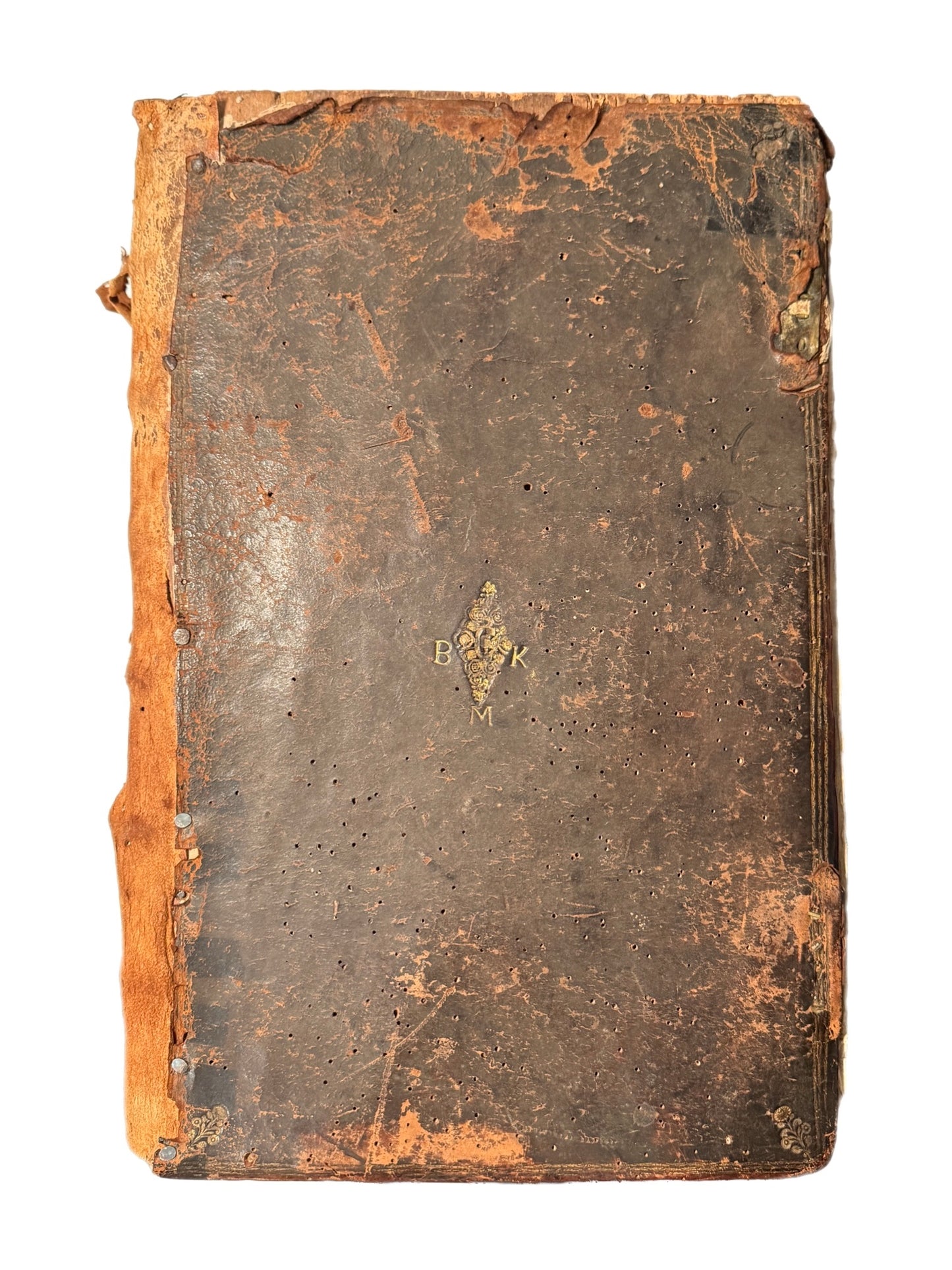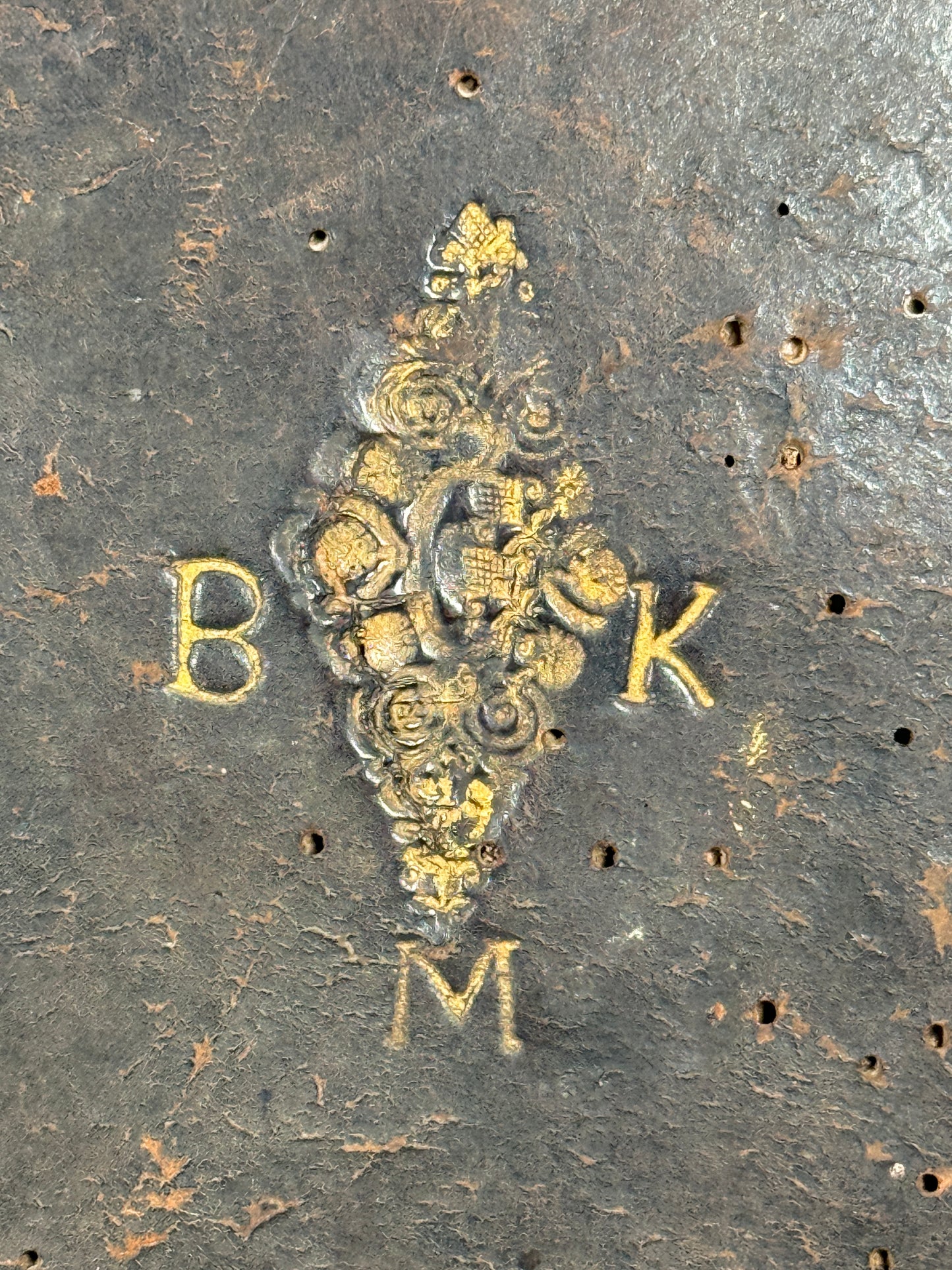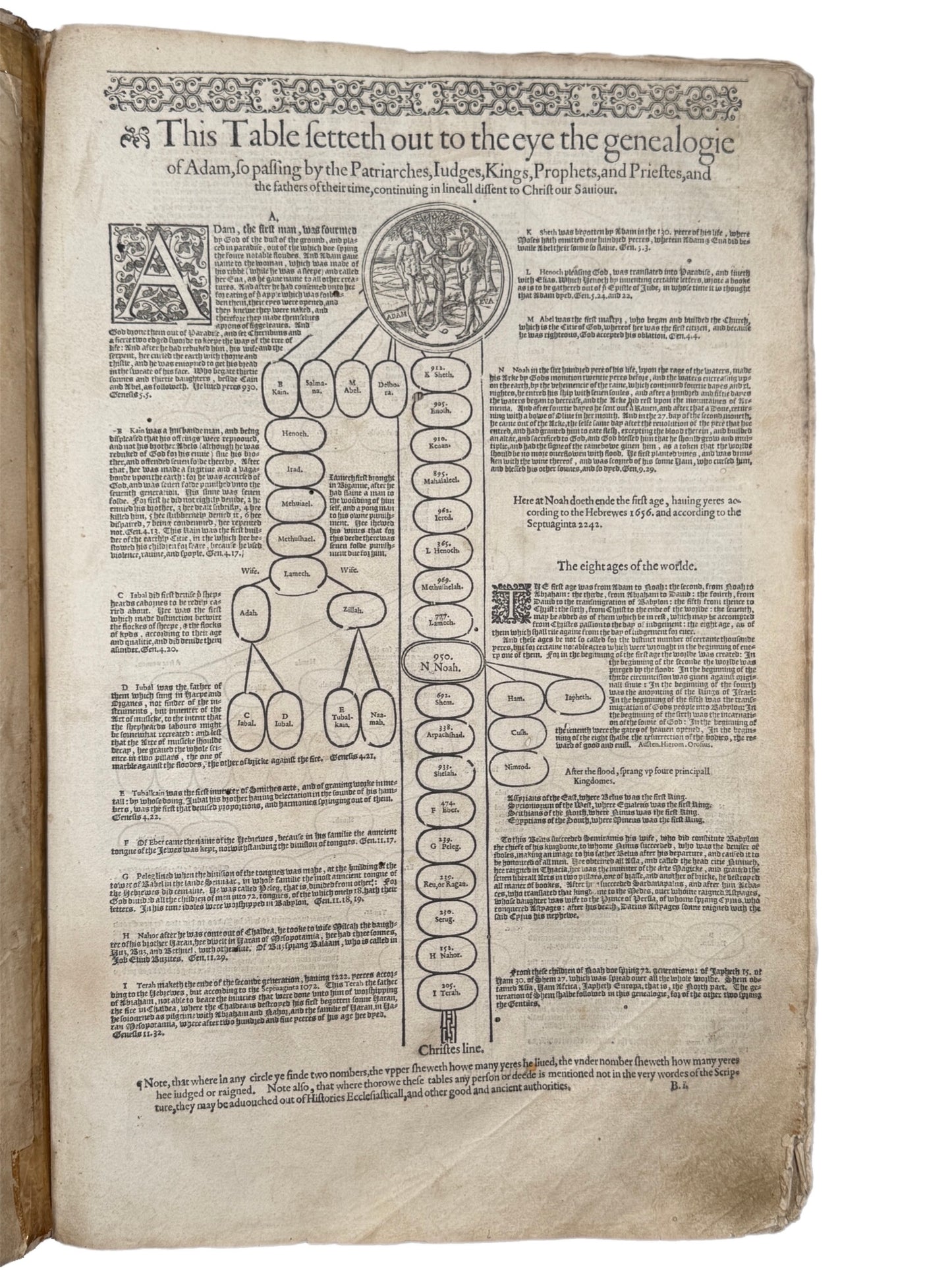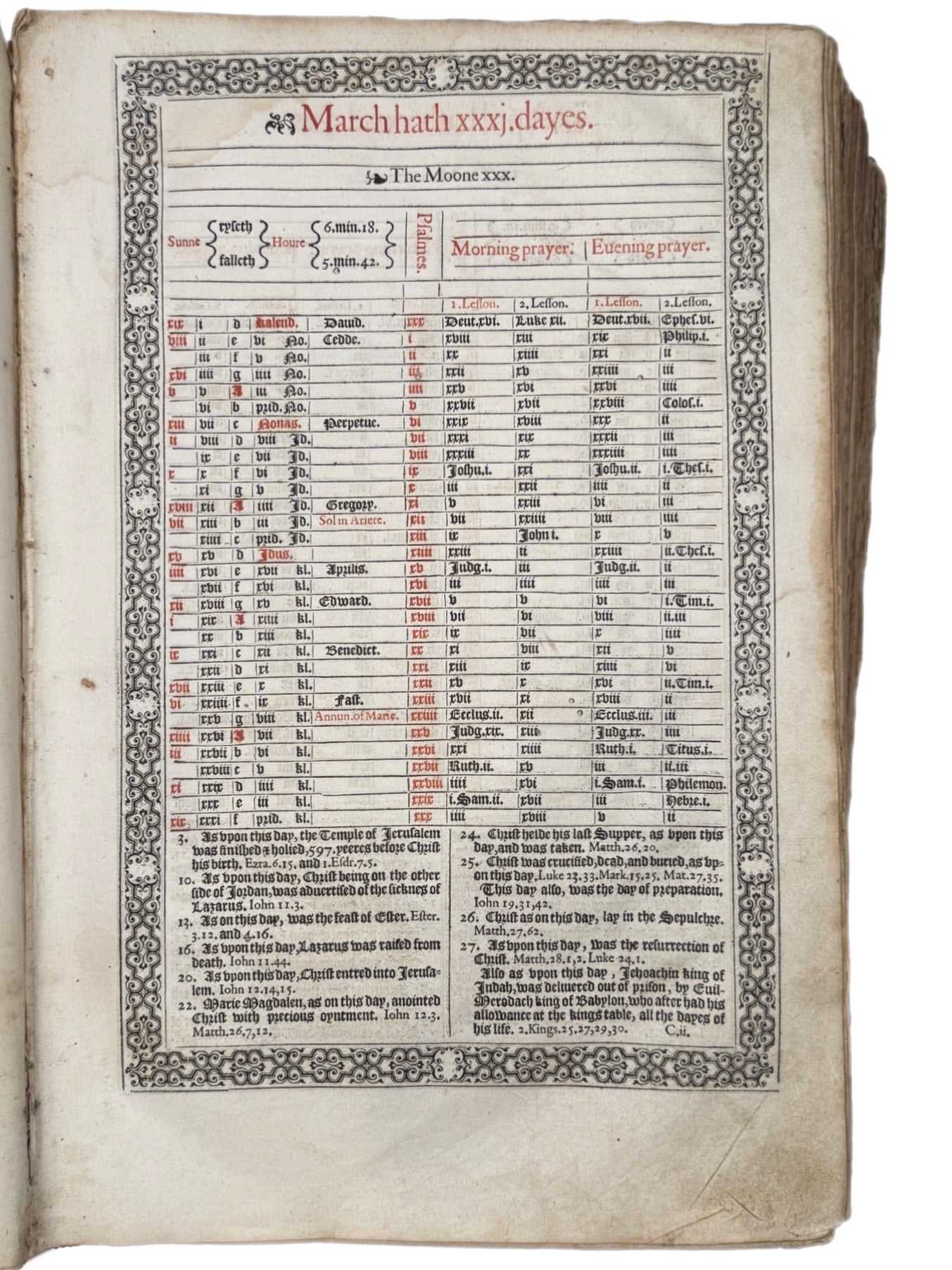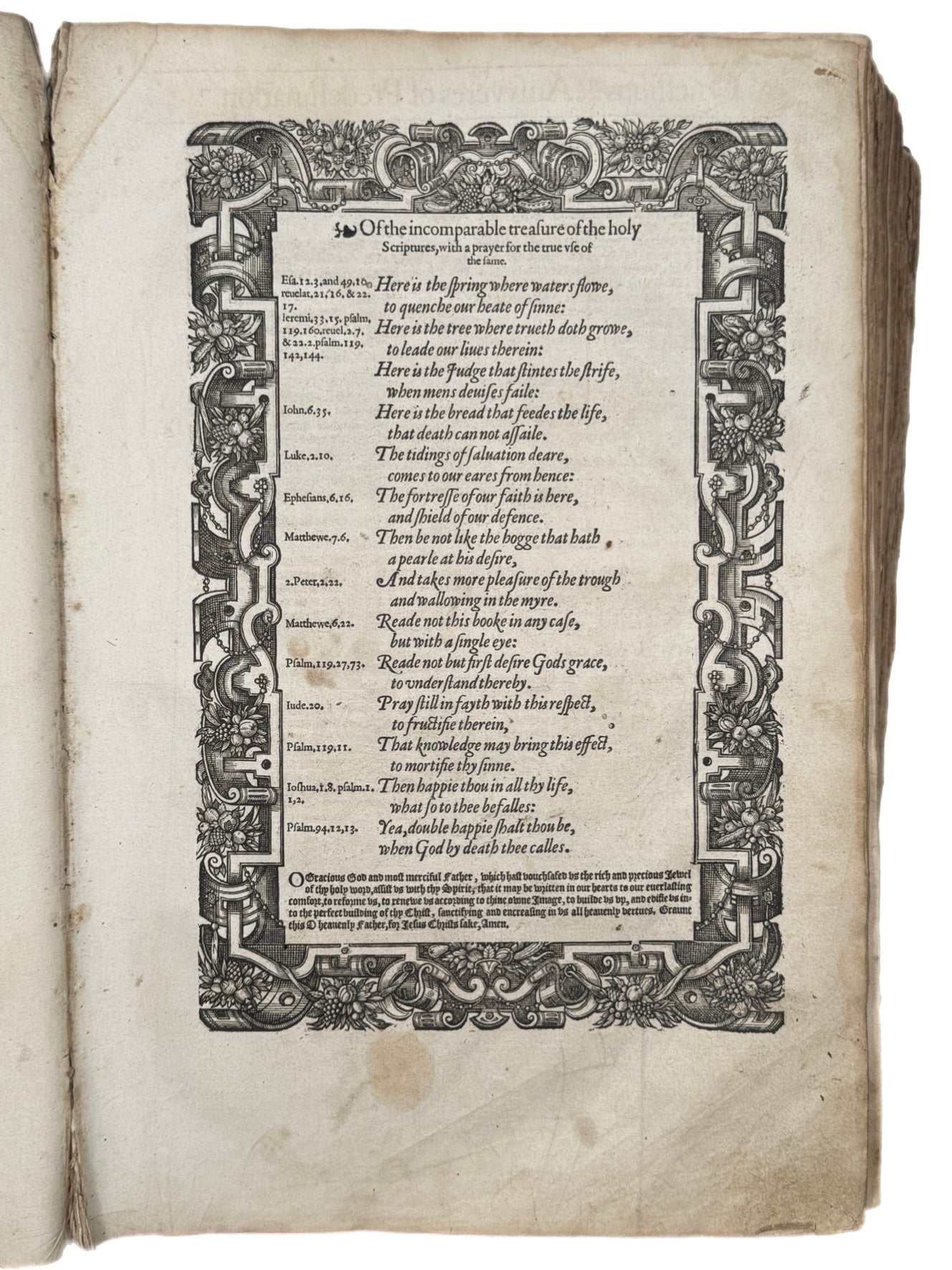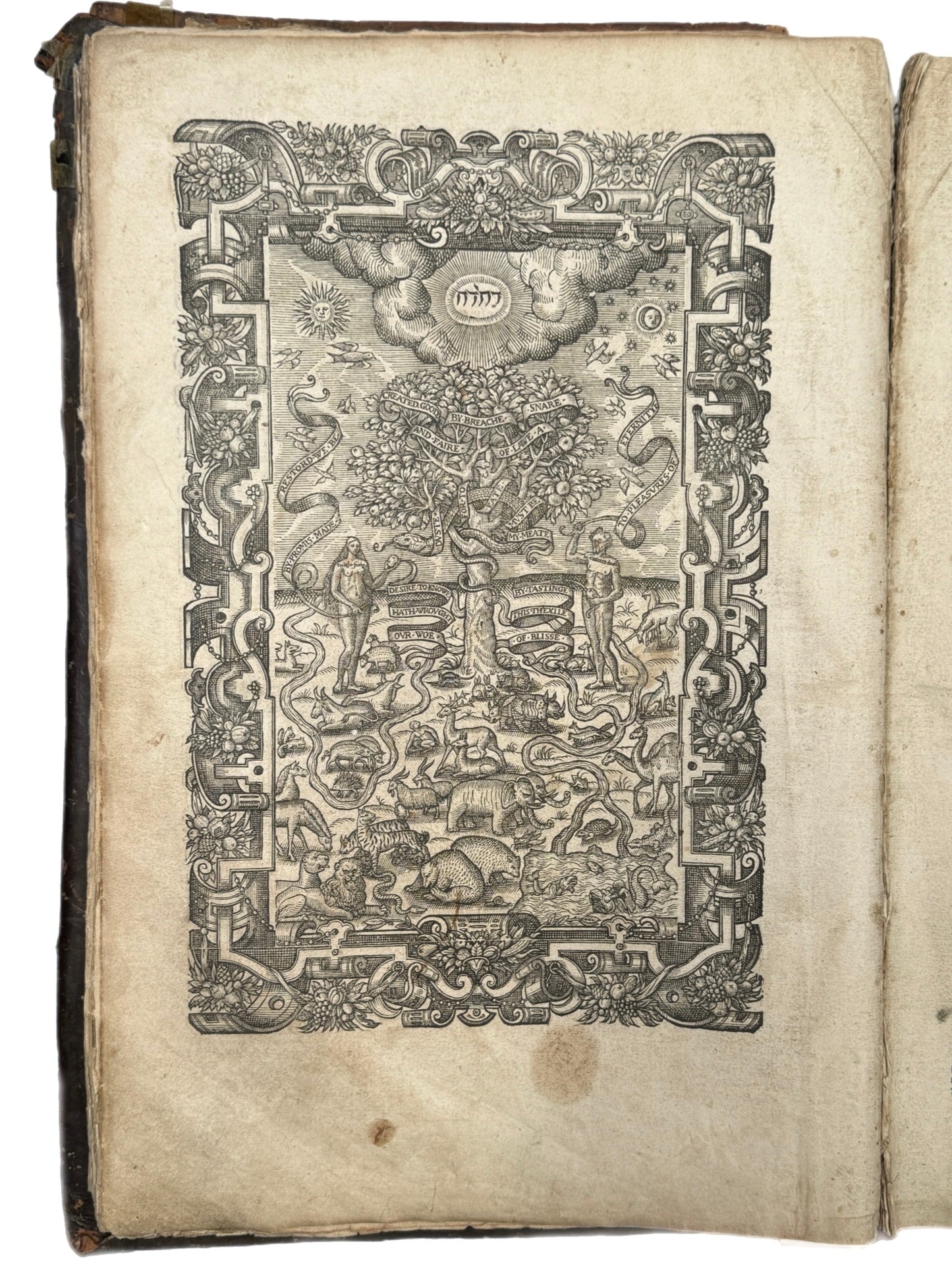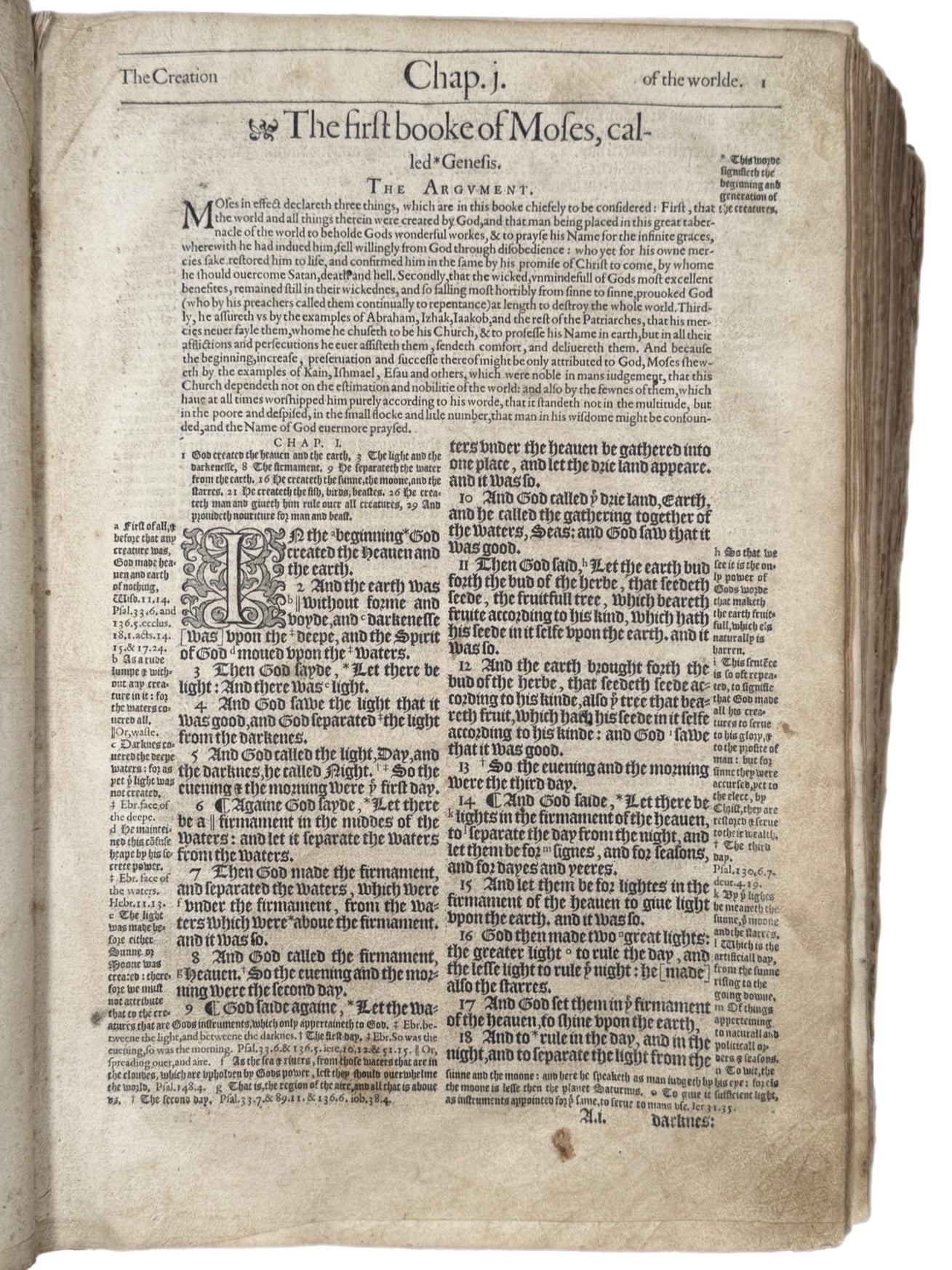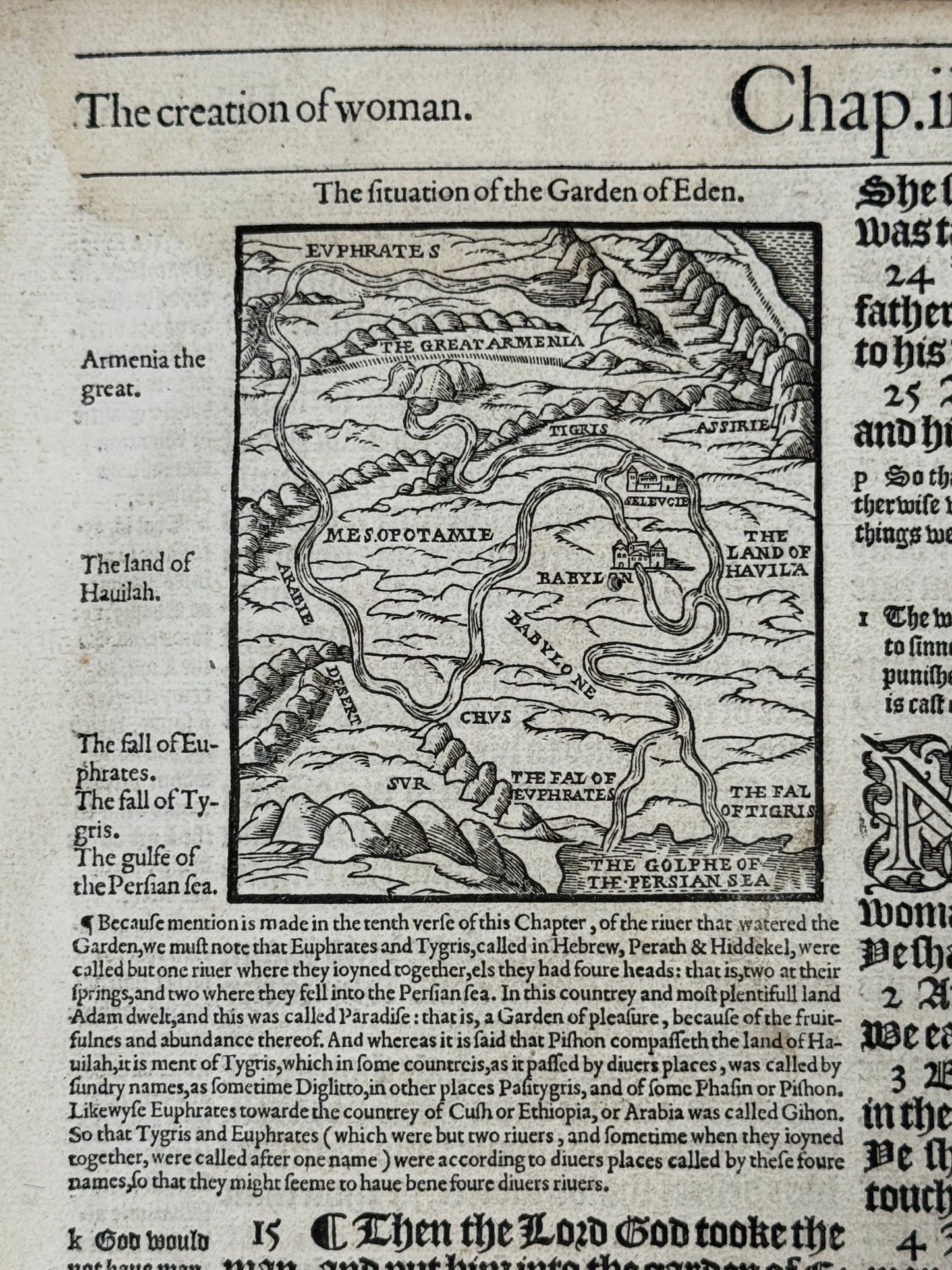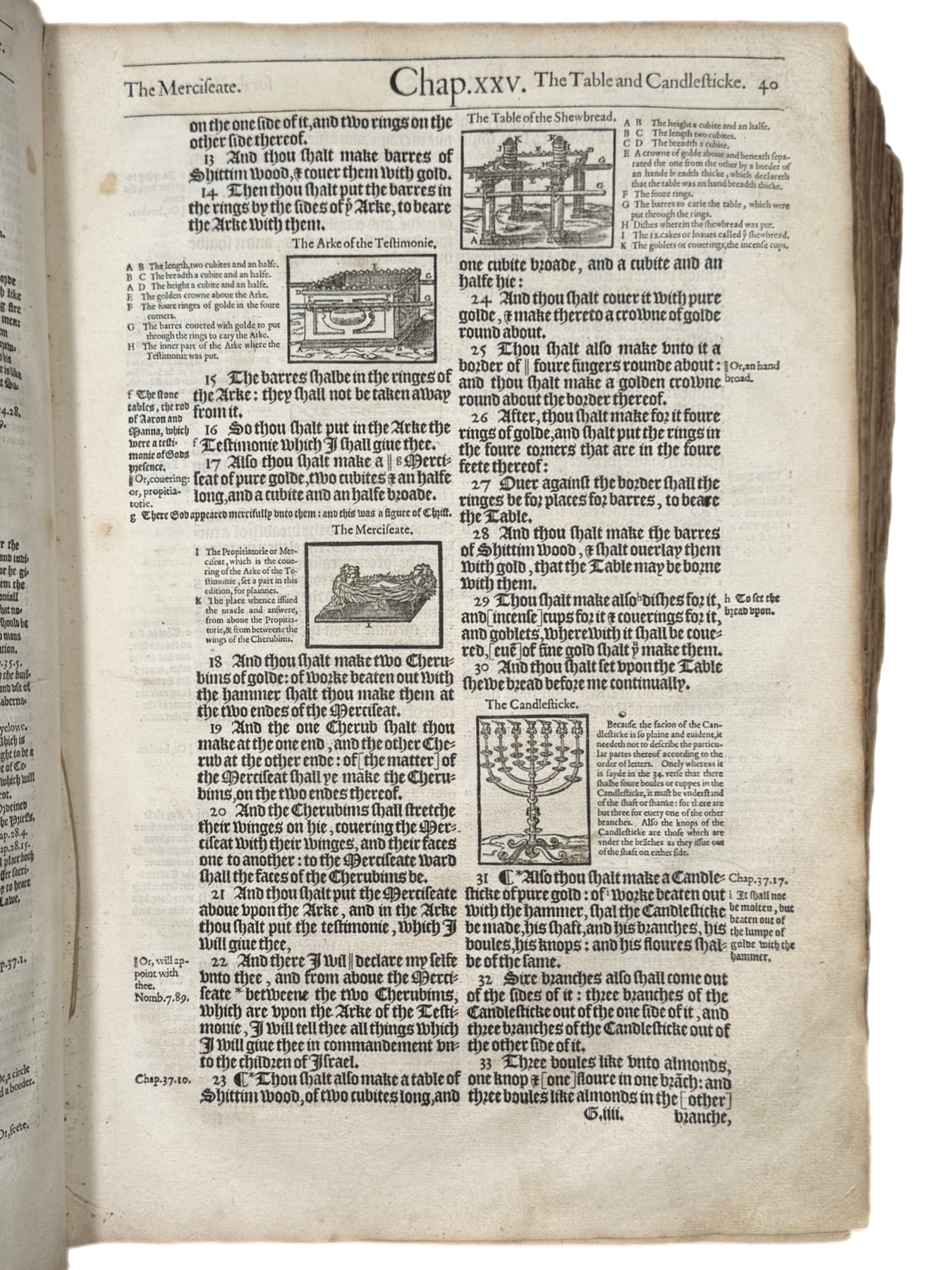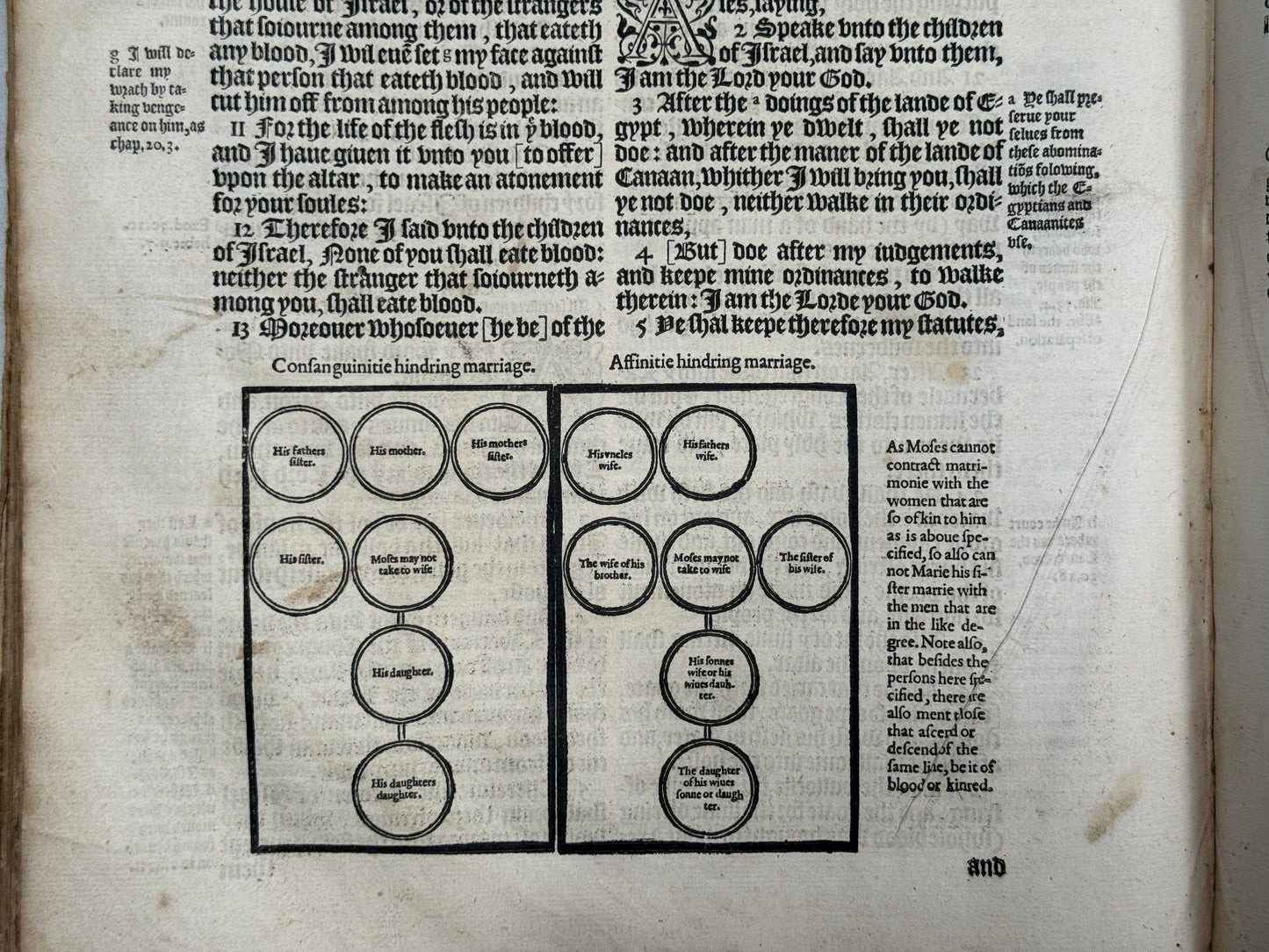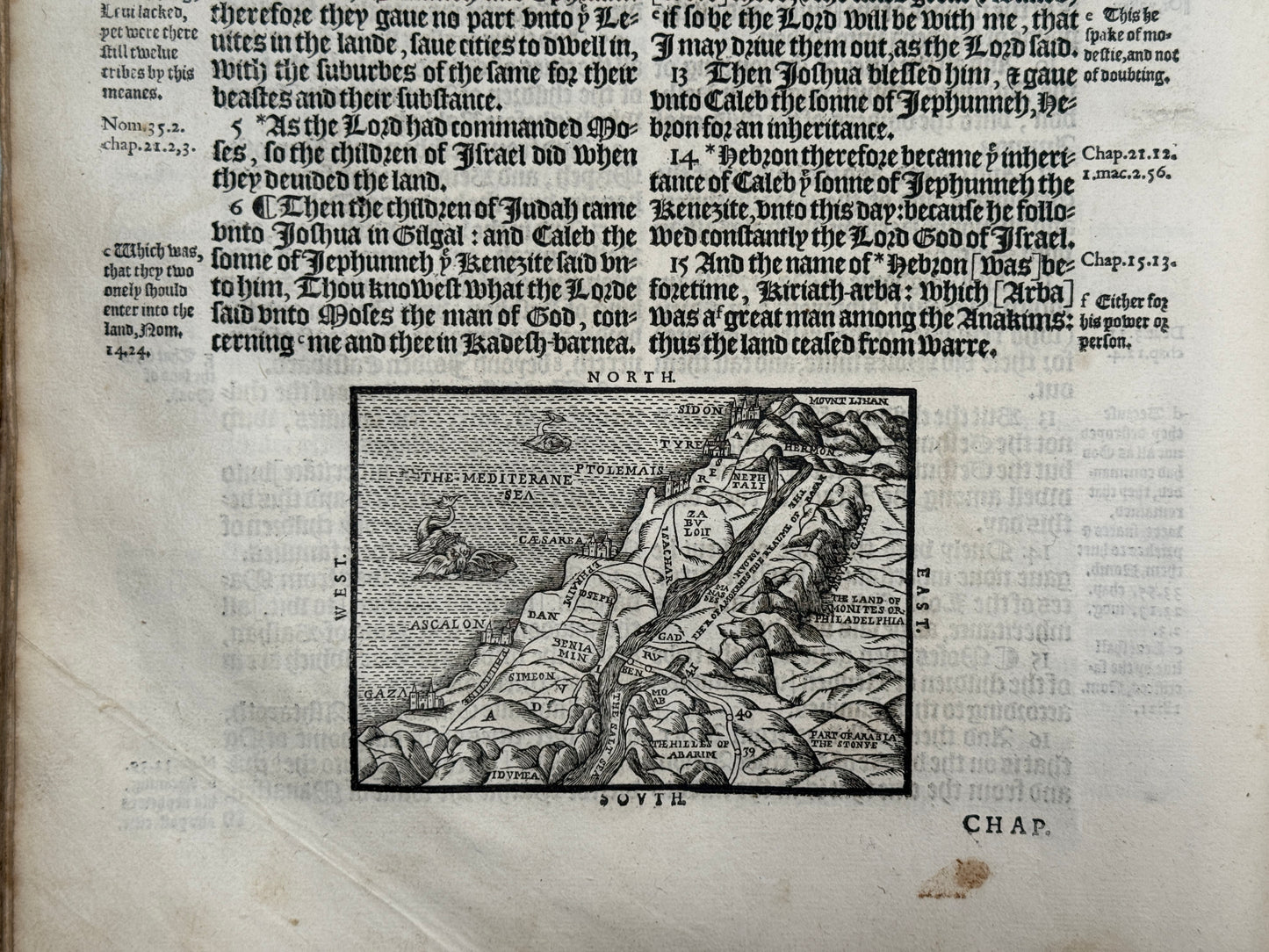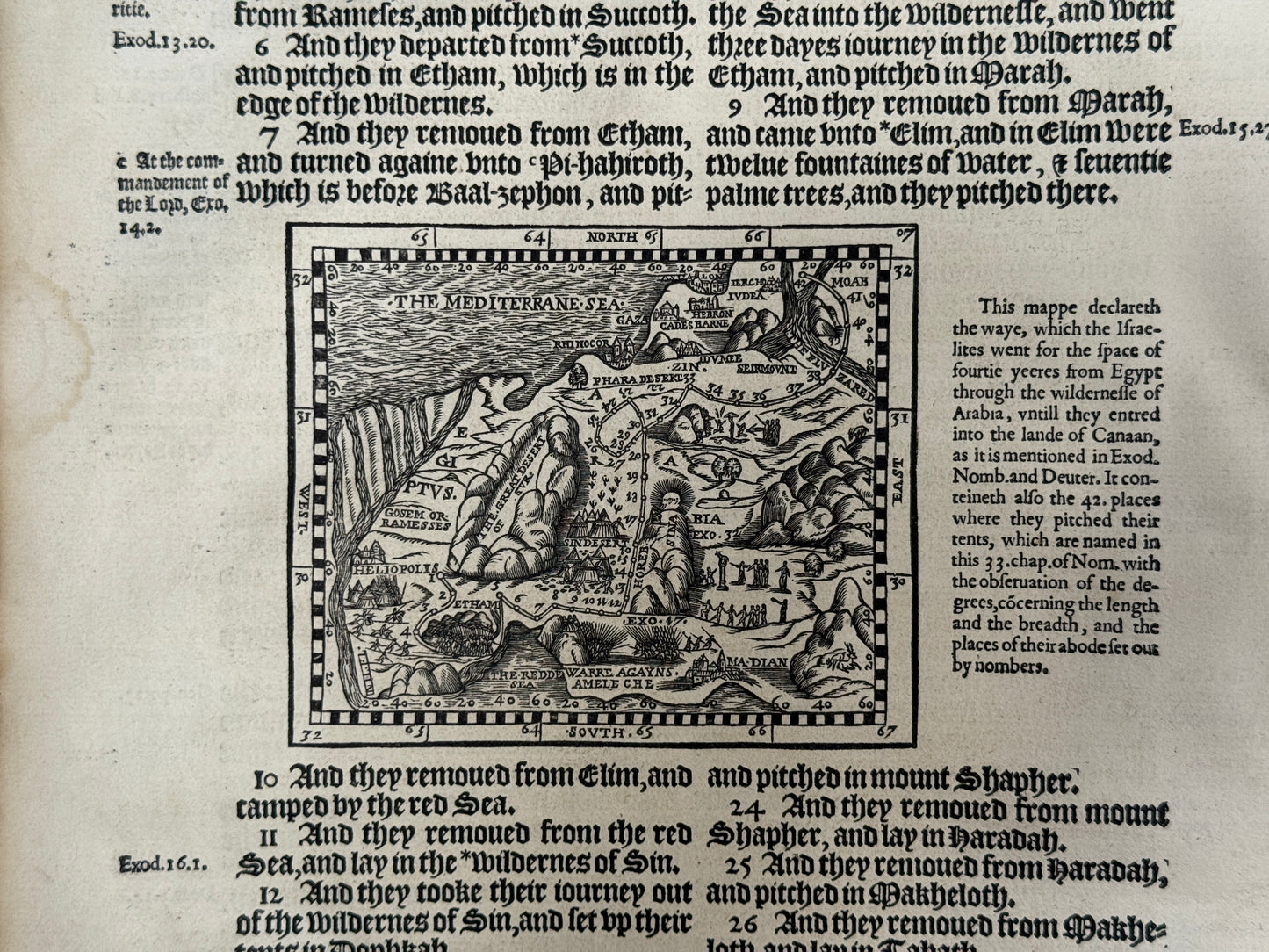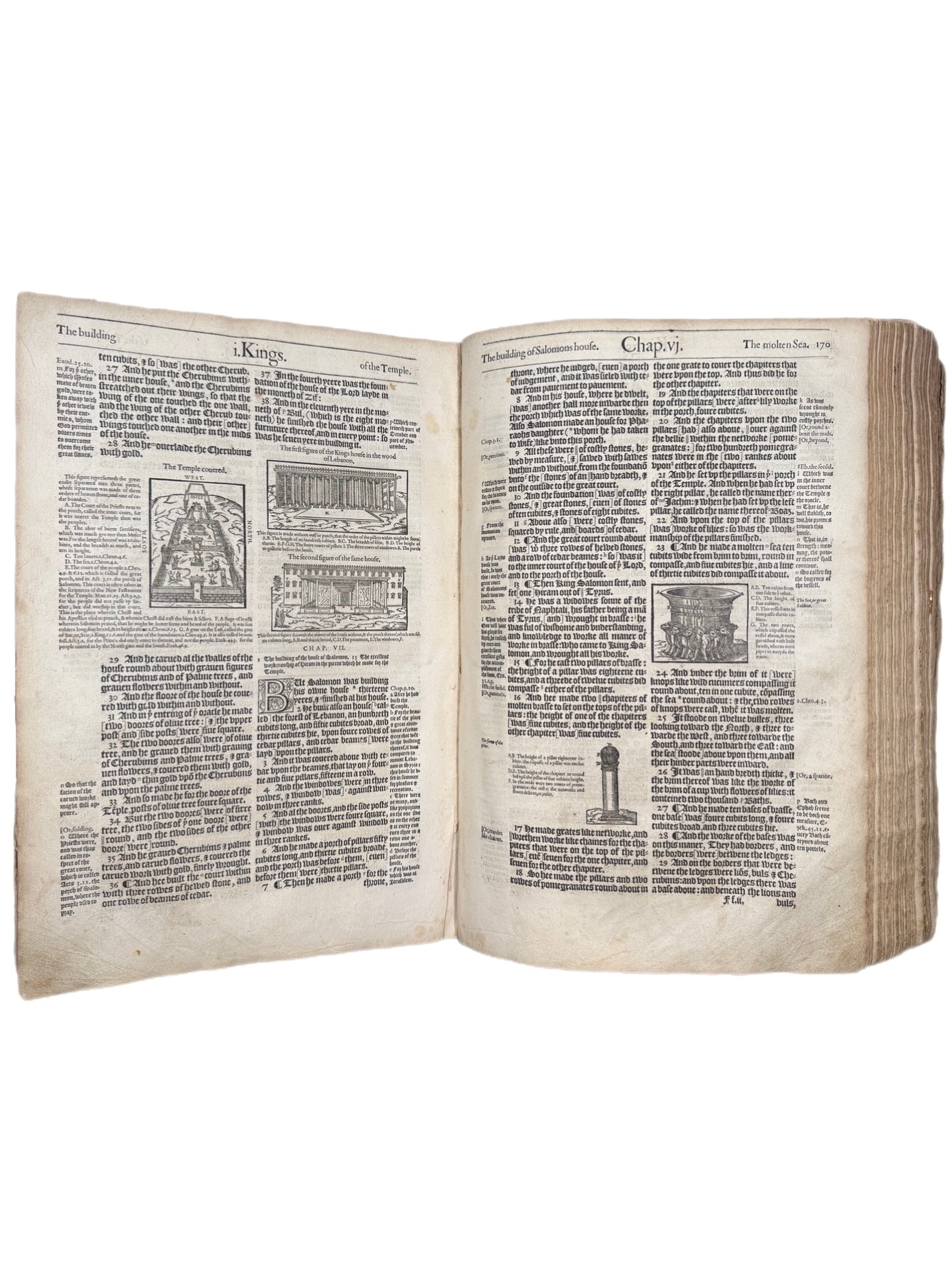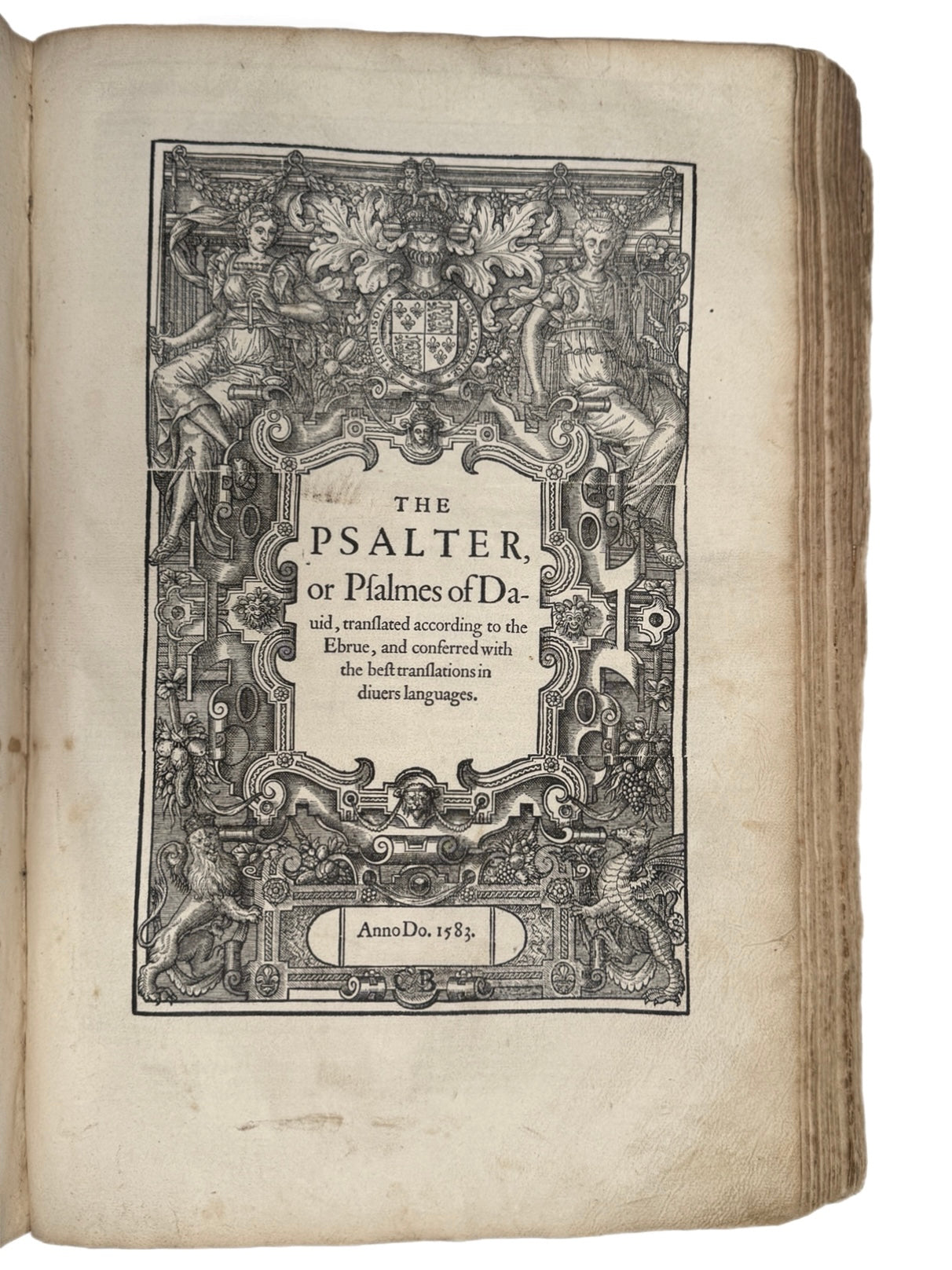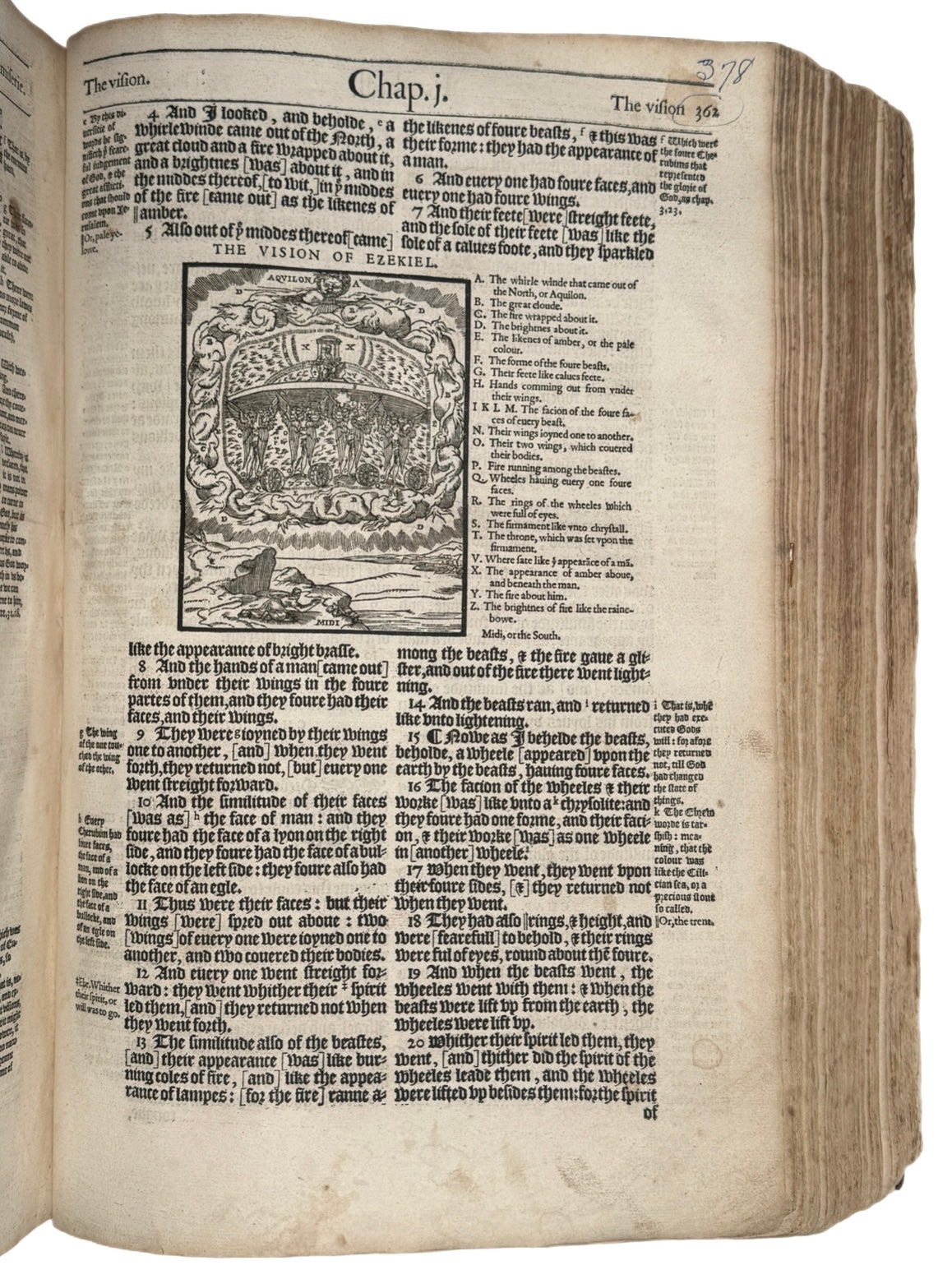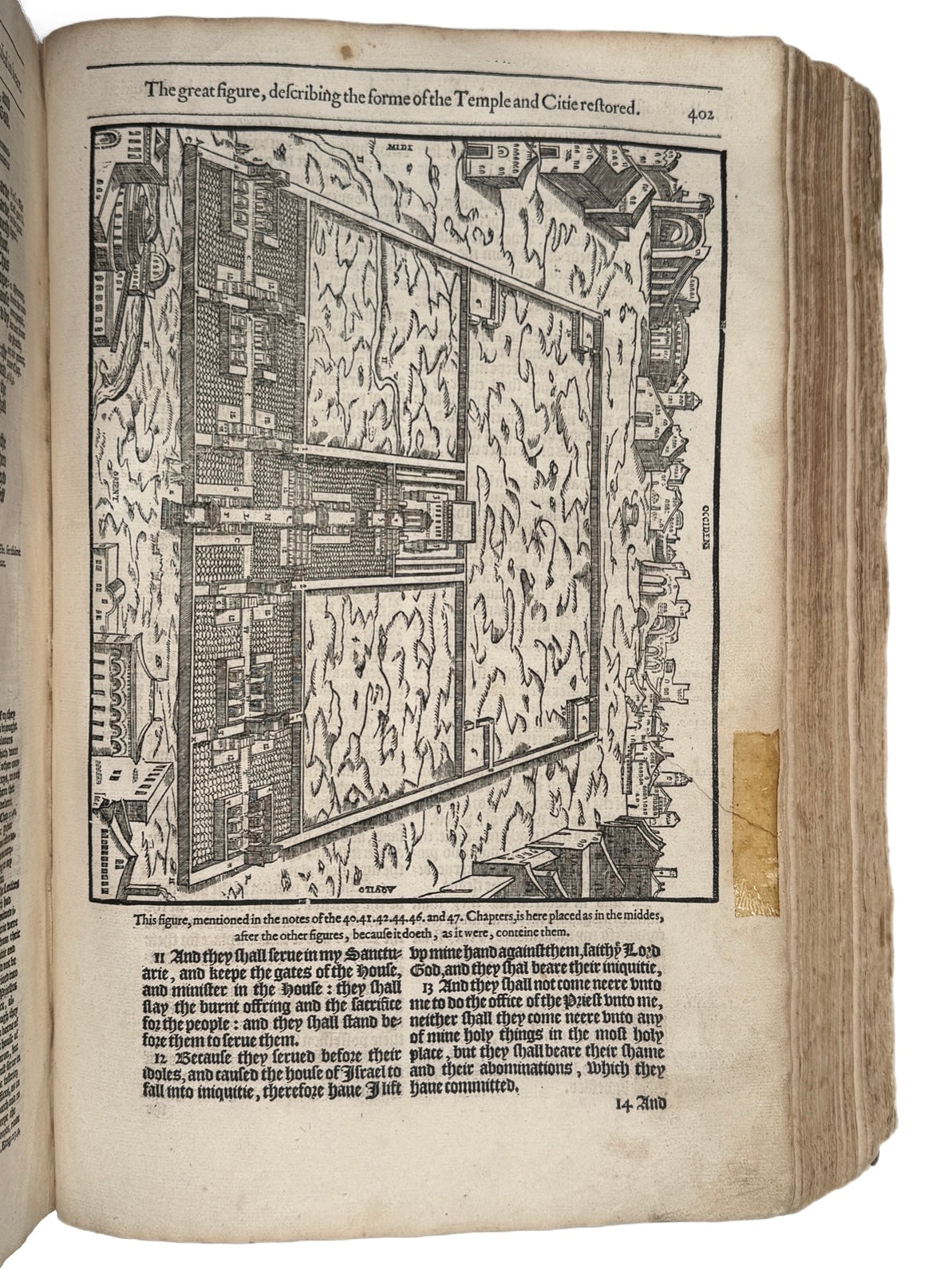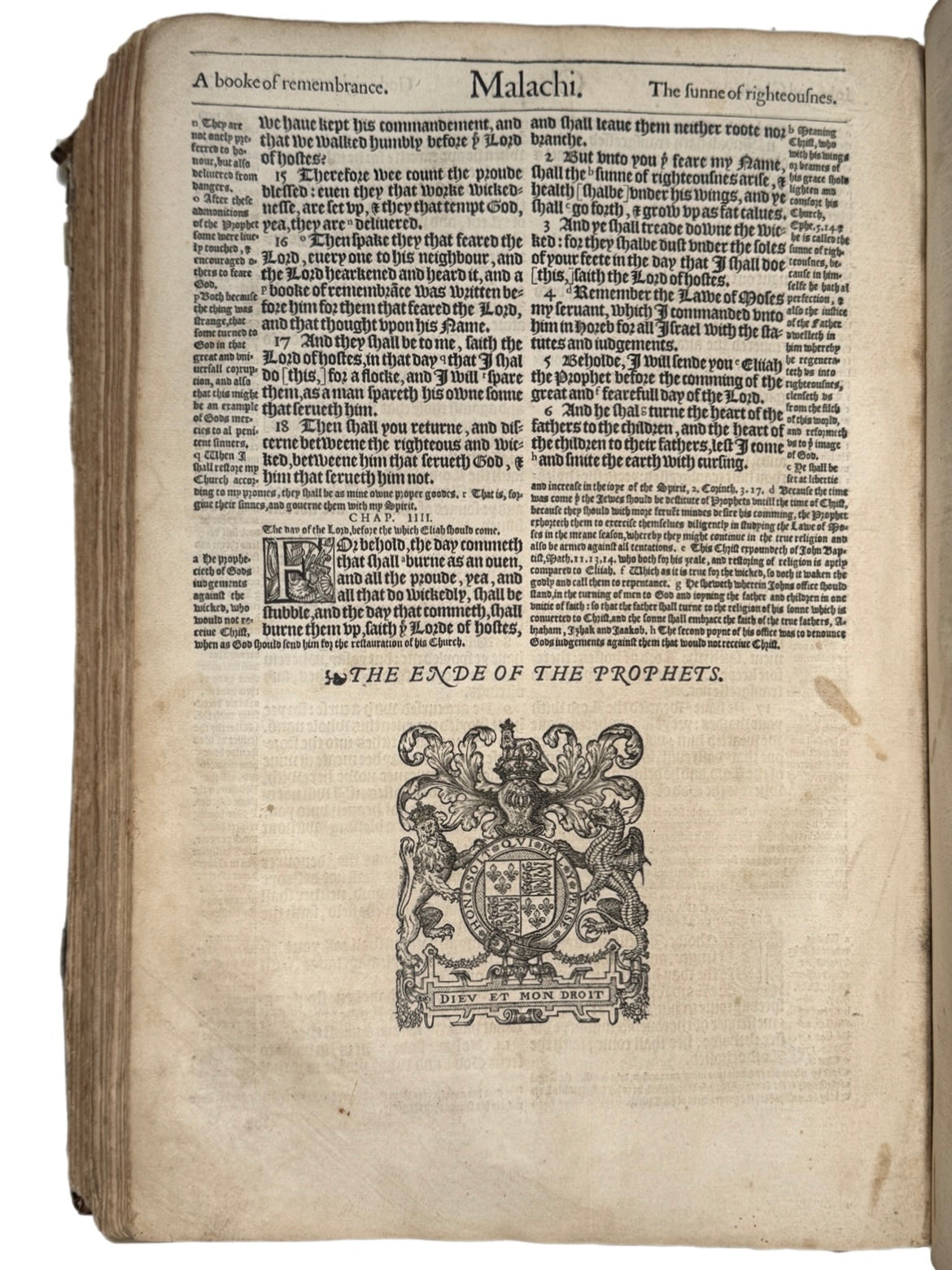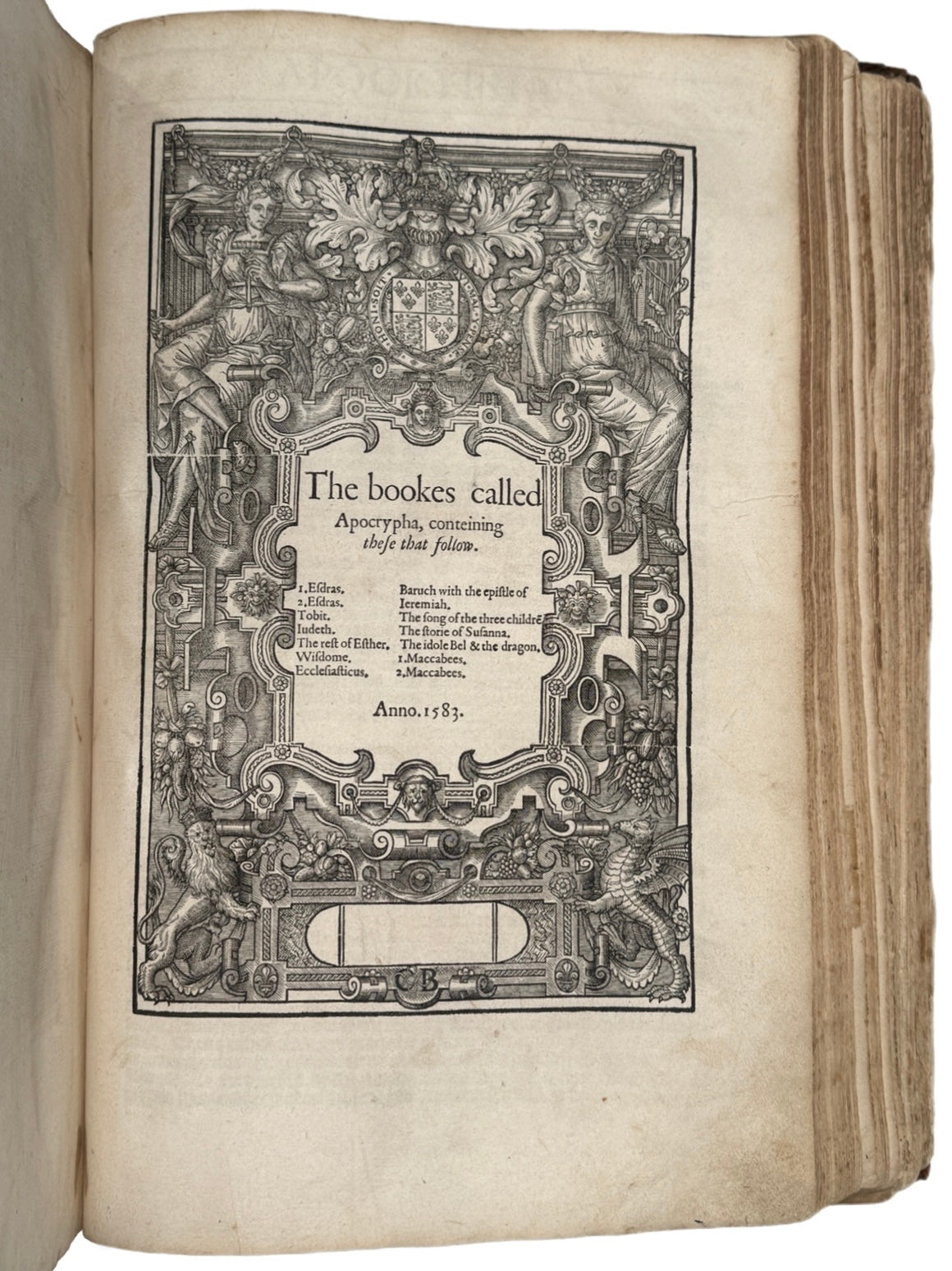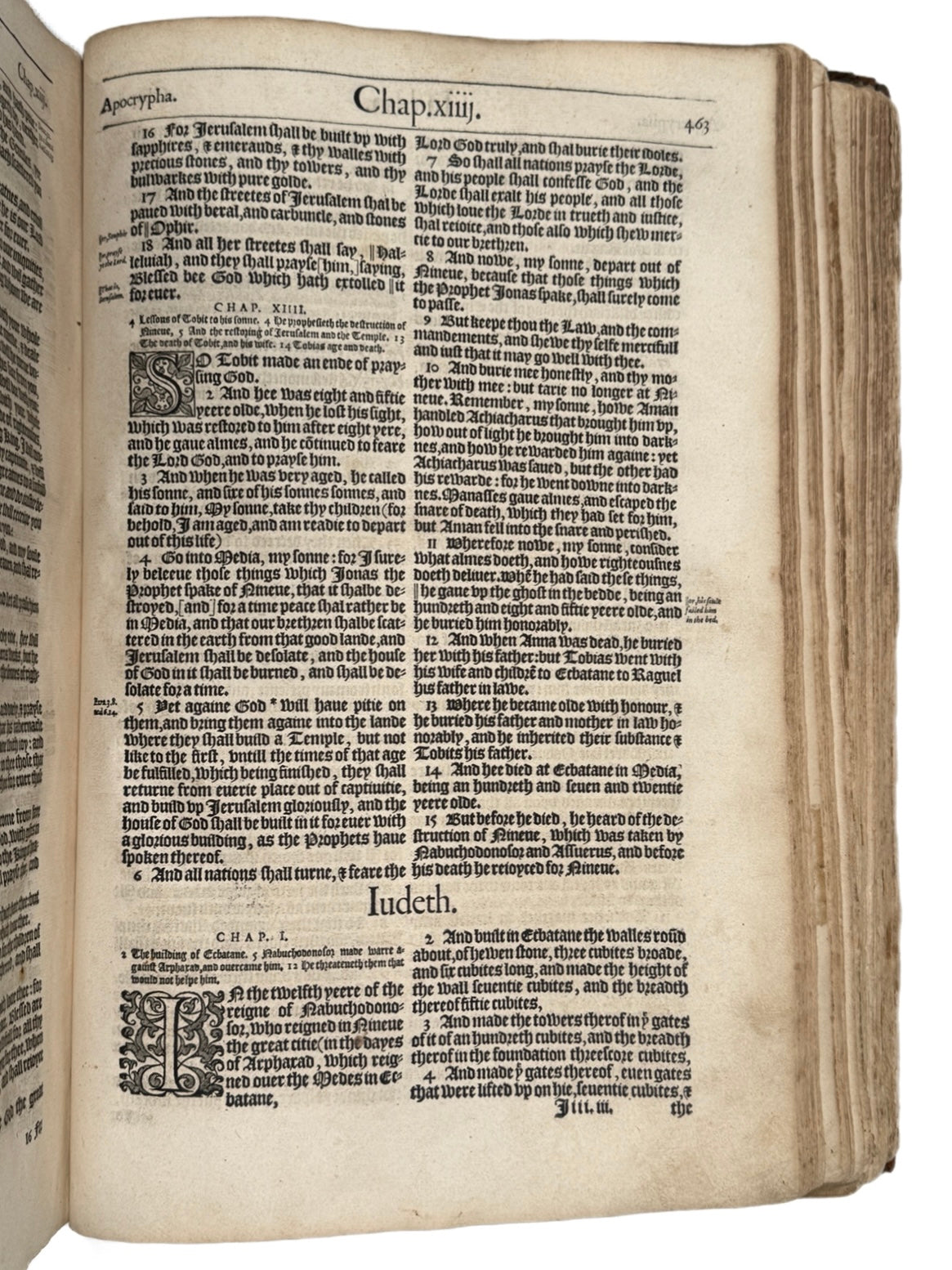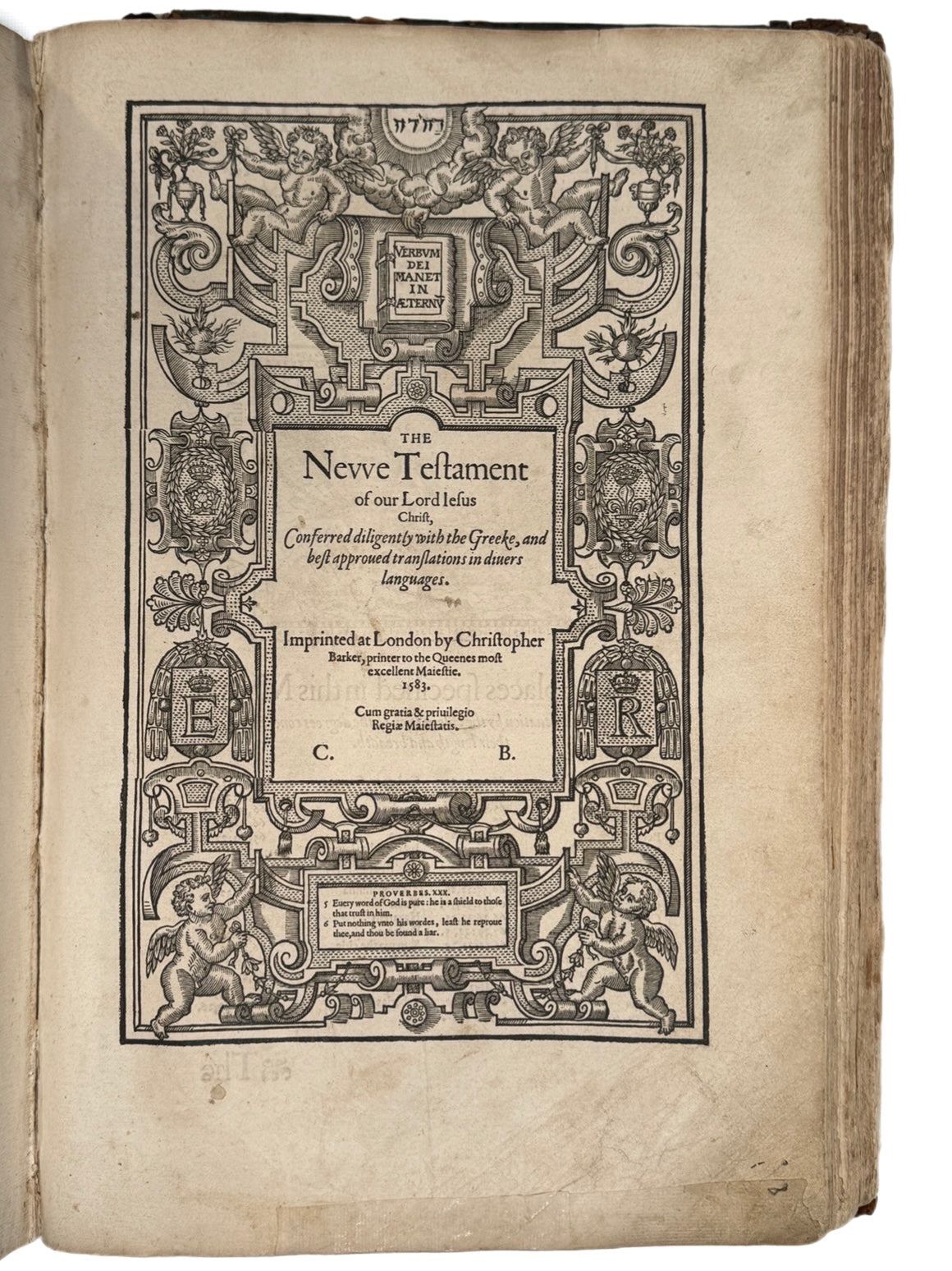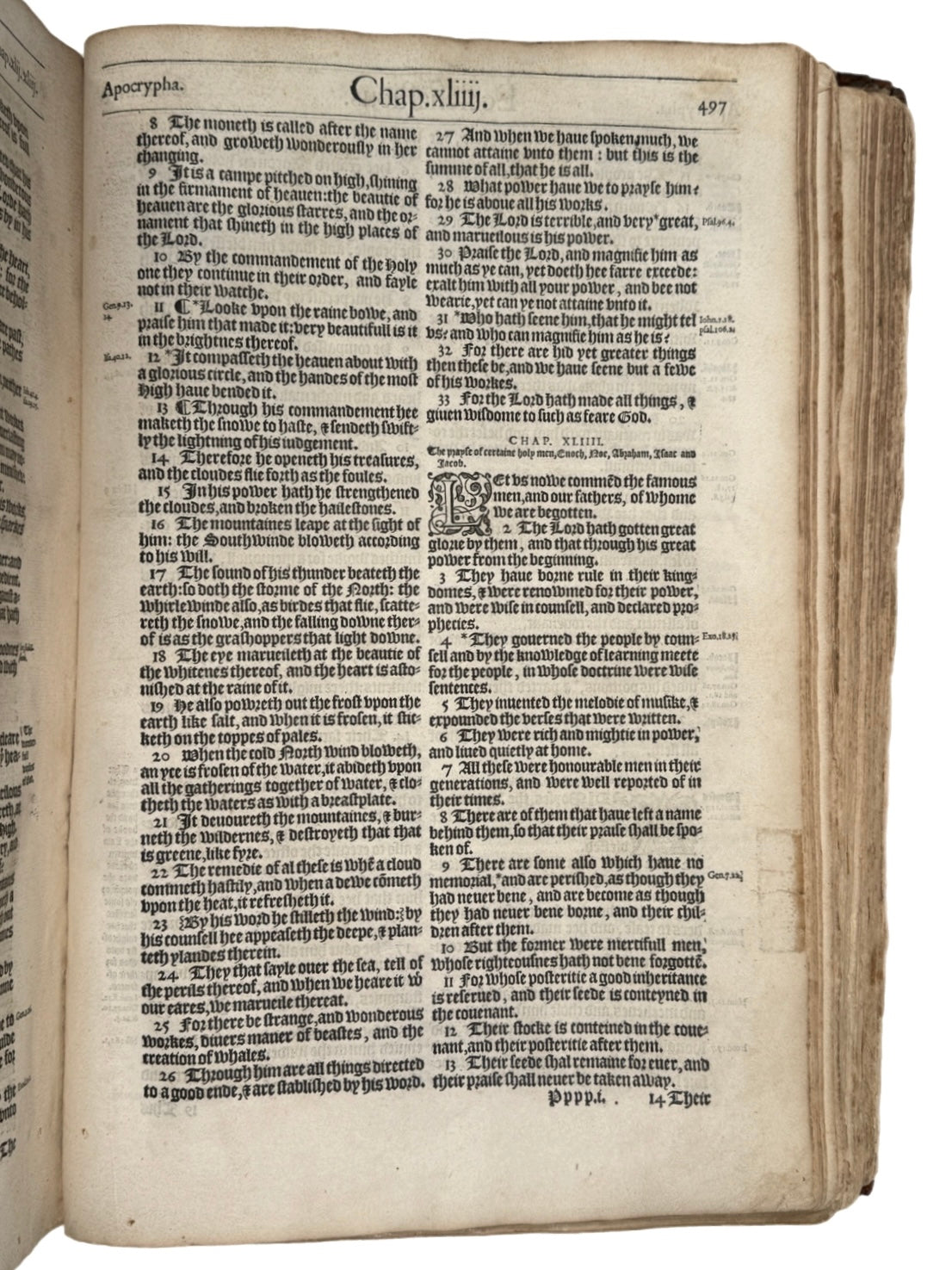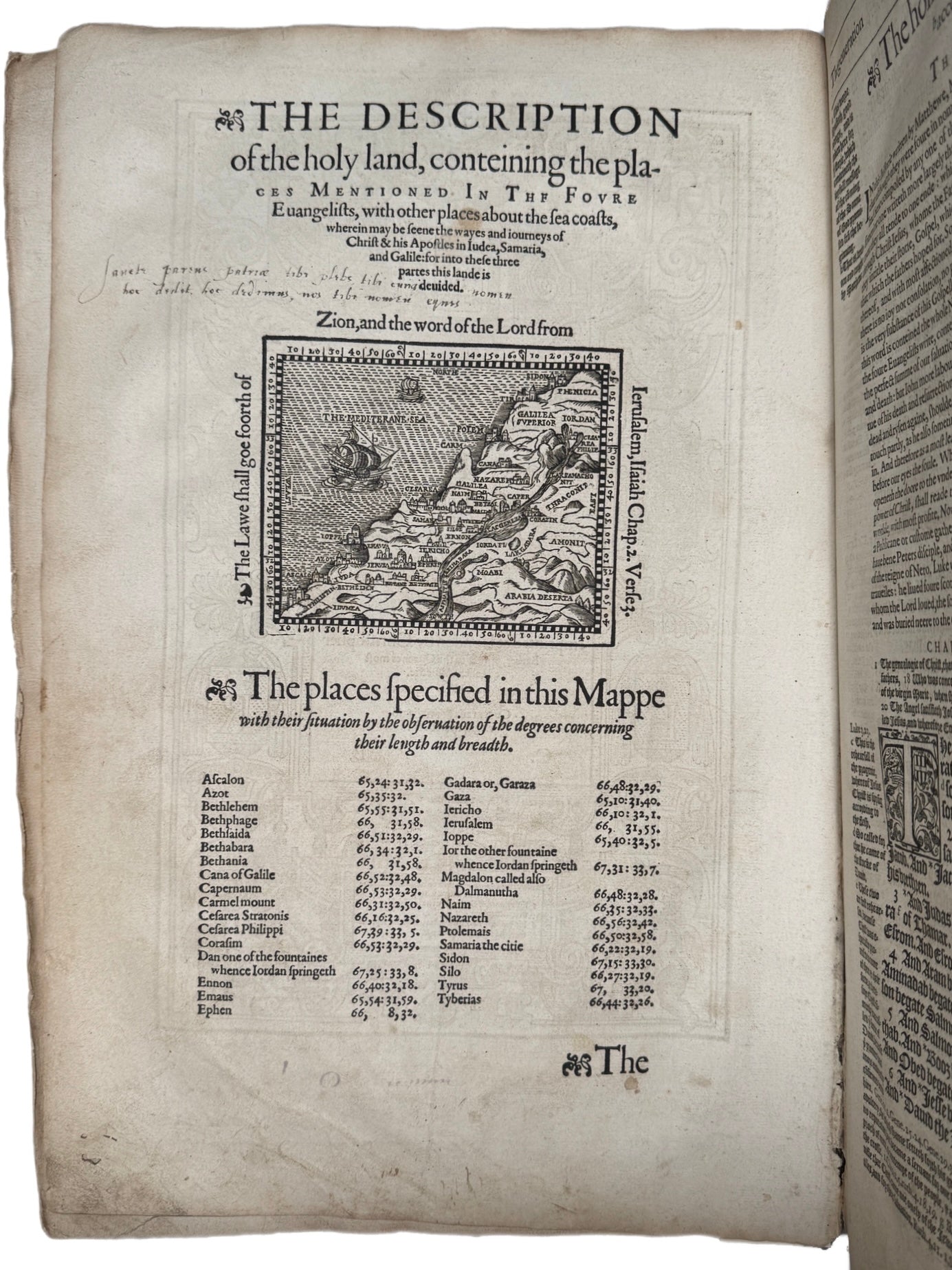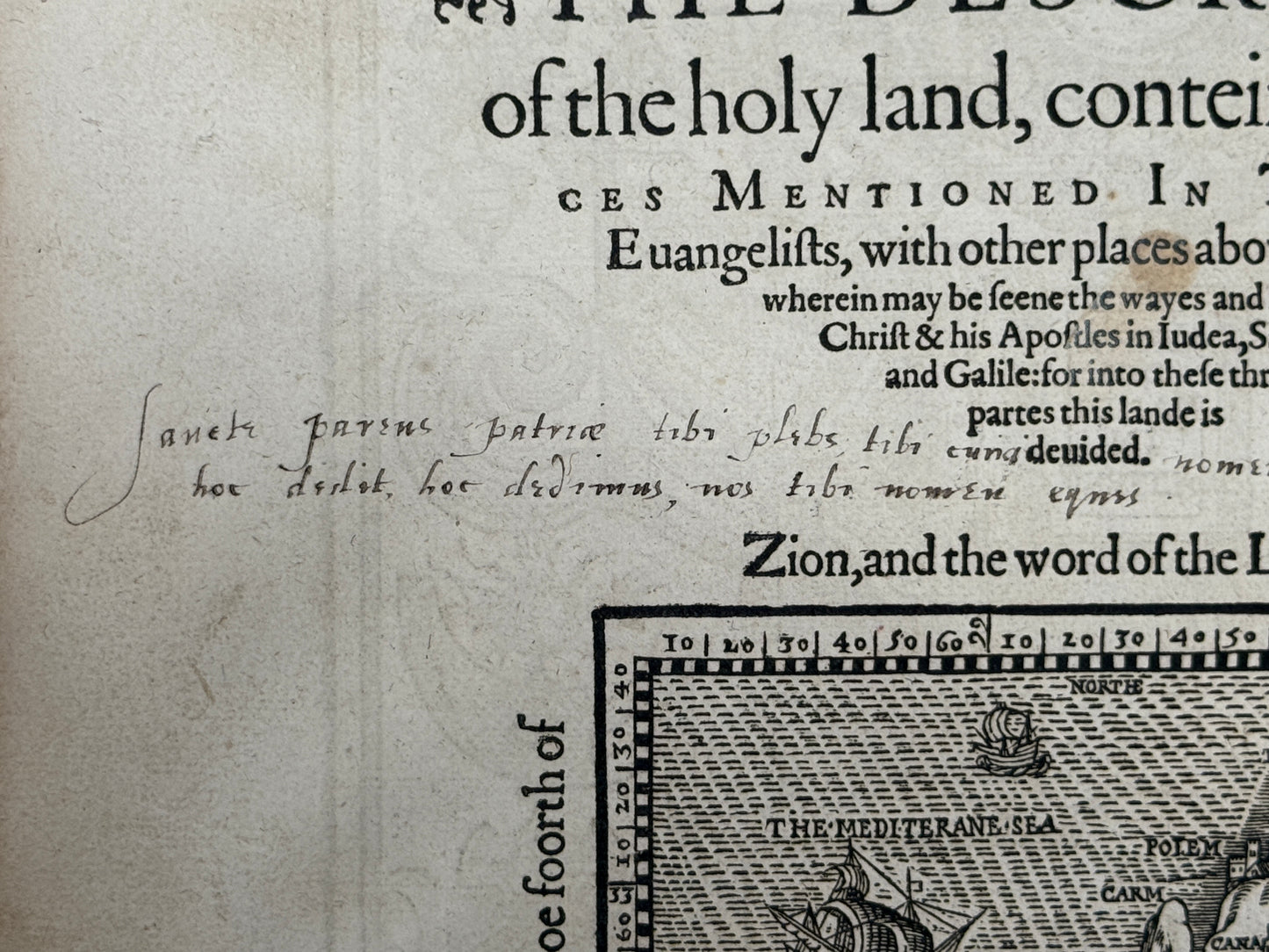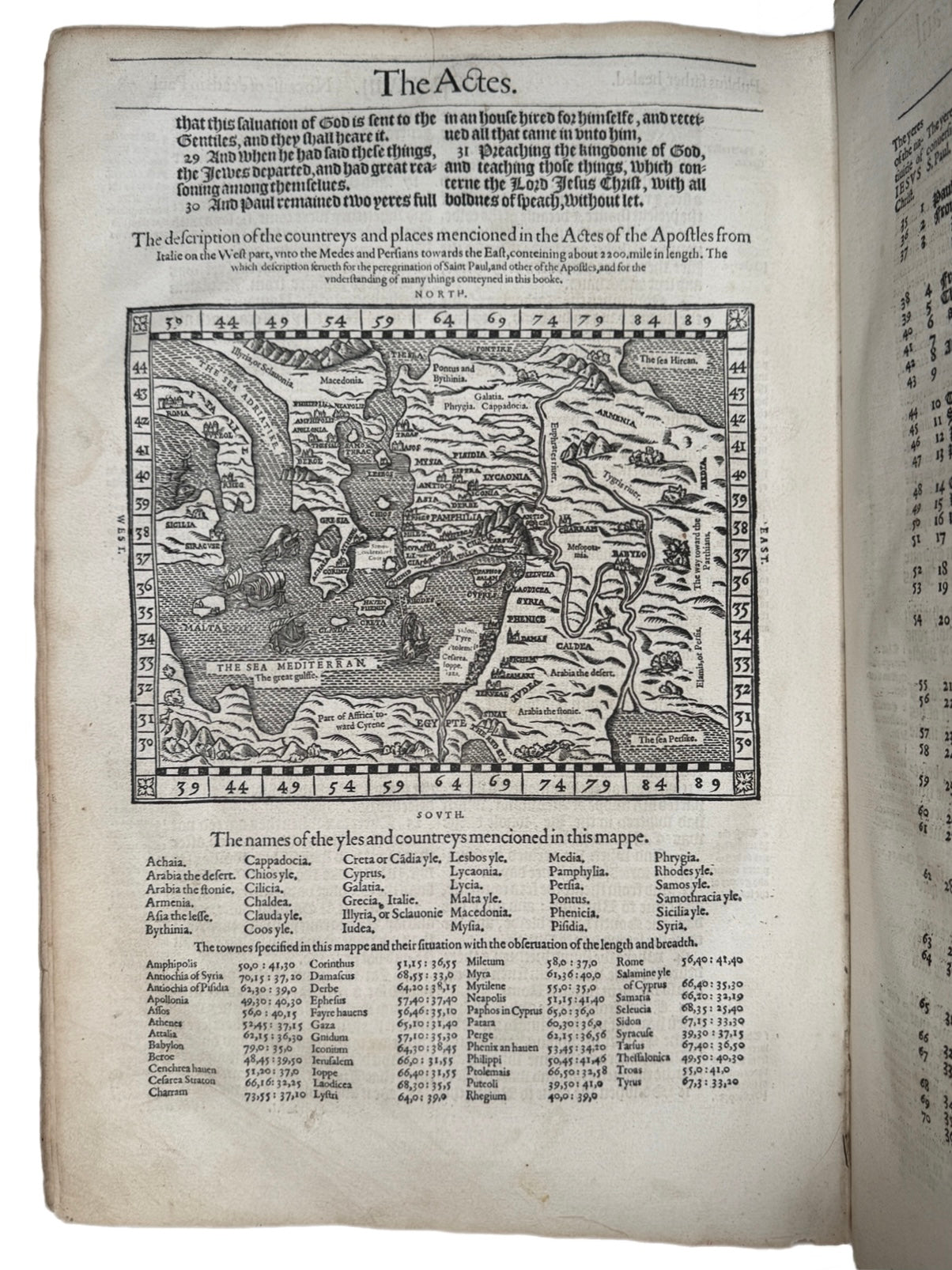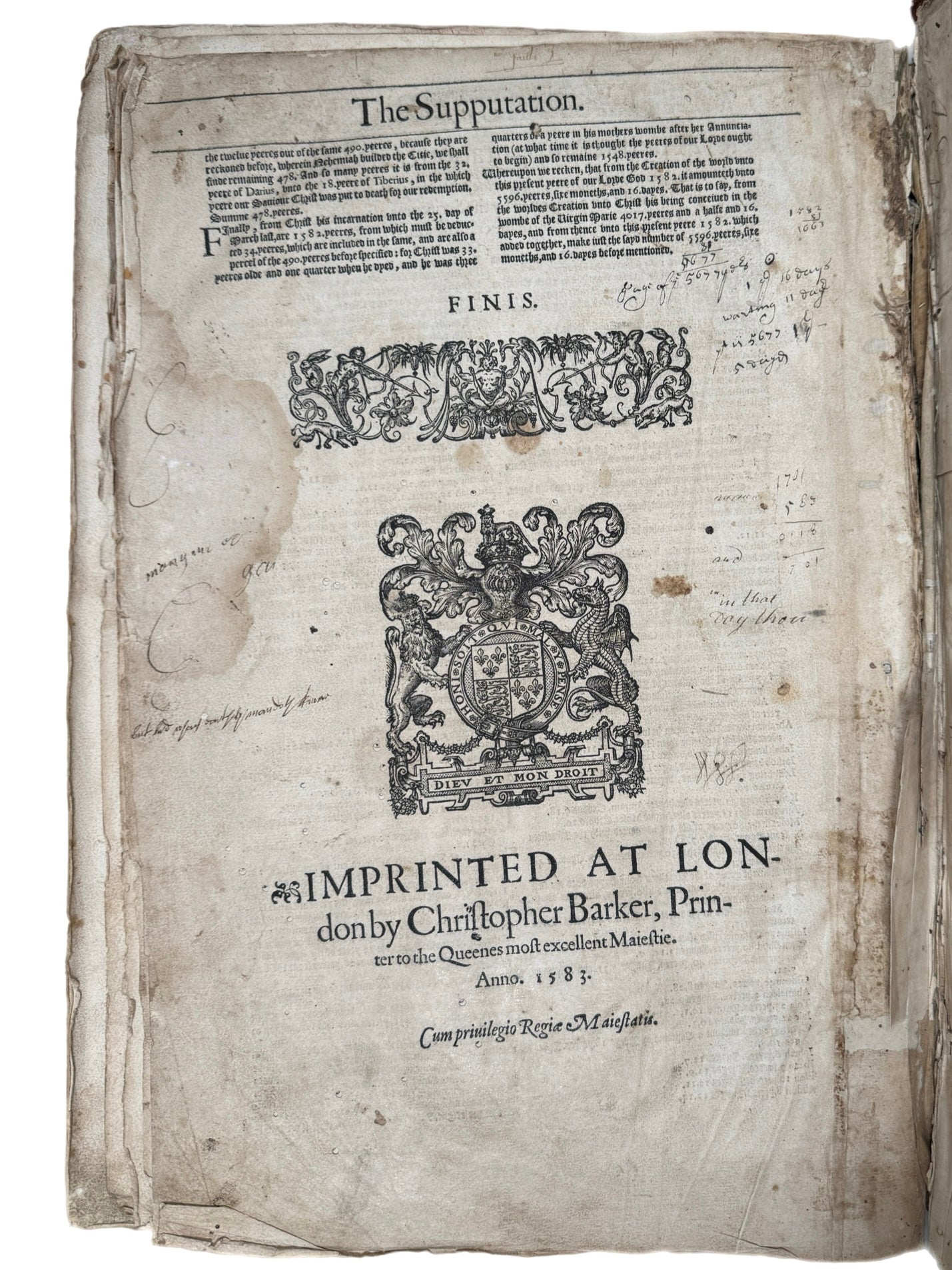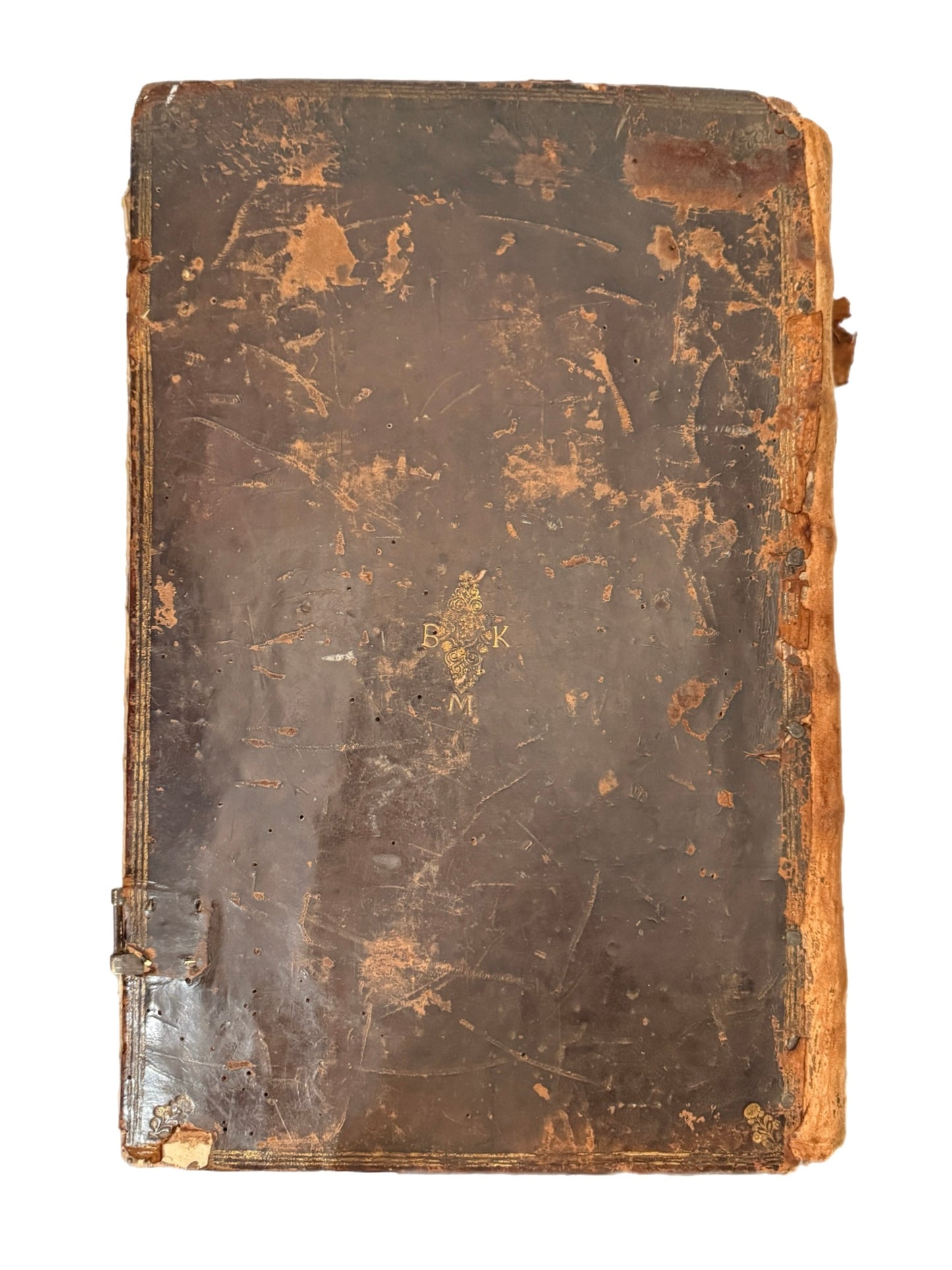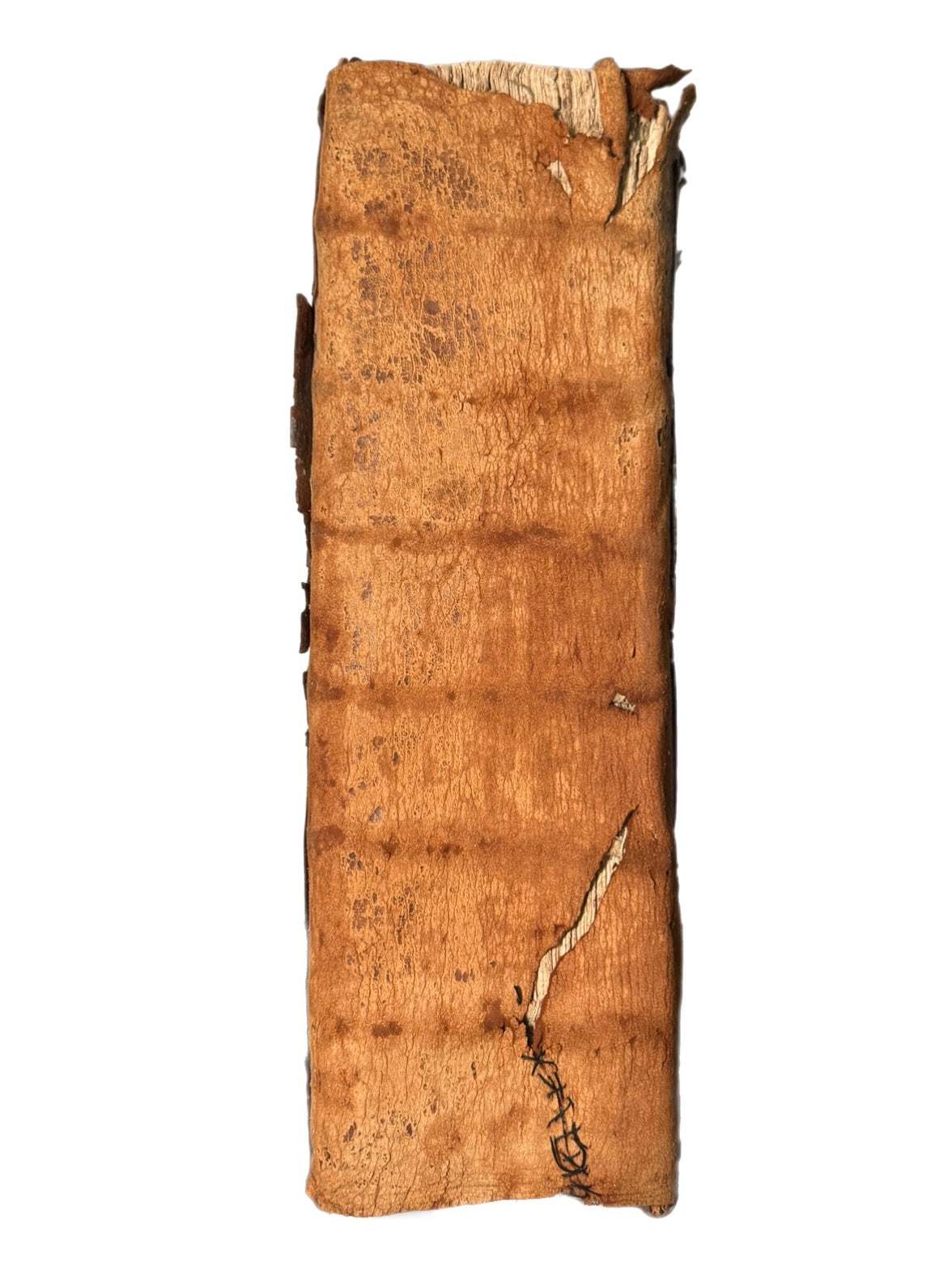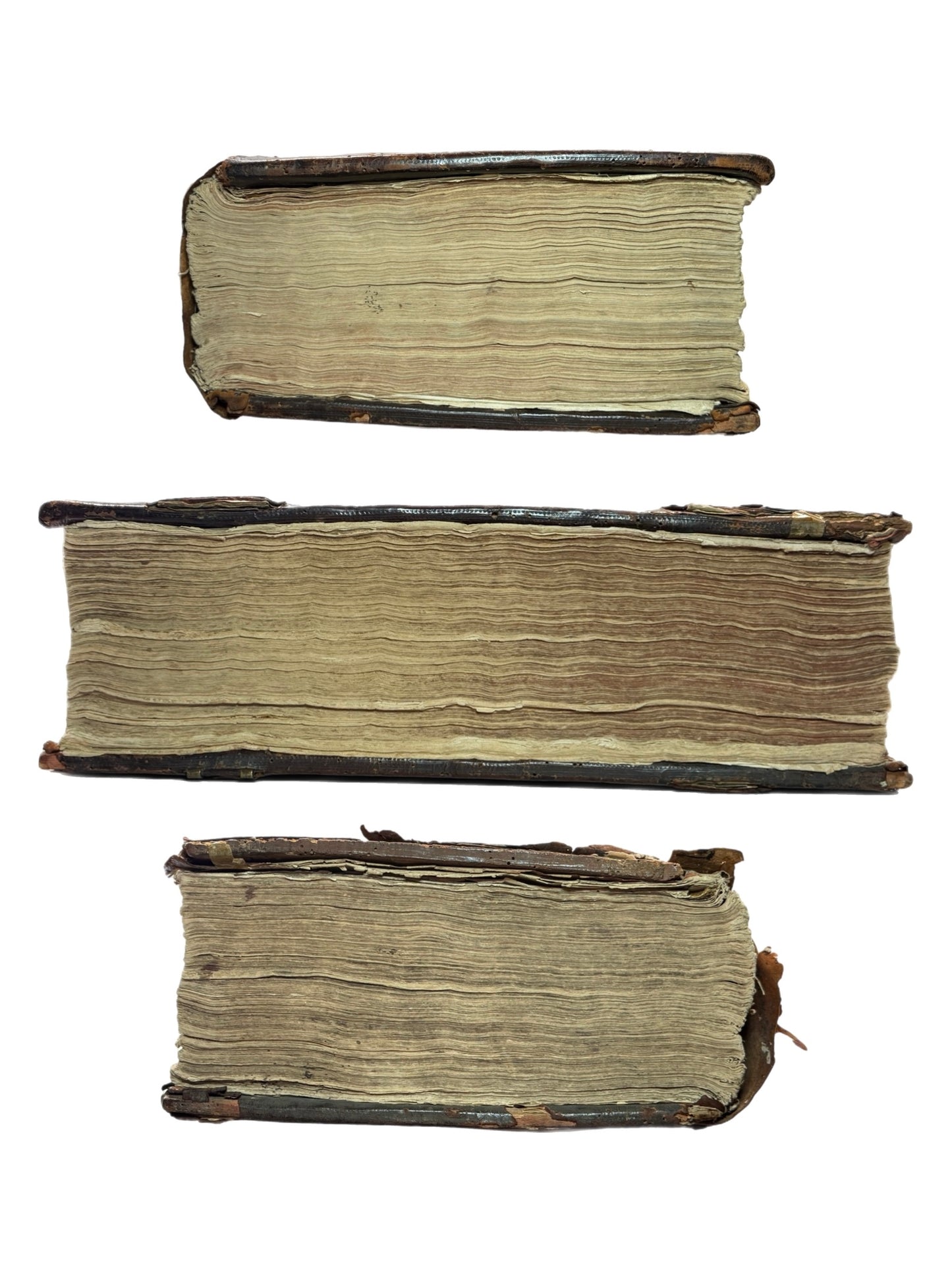The Grand Noble Geneva Bible 1583: Possibly Associated with a Translator of the Geneva Bible
The Grand Noble Geneva Bible 1583: Possibly Associated with a Translator of the Geneva Bible
Couldn't load pickup availability
The Bible. Translated according to the Ebrew and Greeke, and conferred with the best translations in divers languages. With most profitable Annotations upon all the hard places, and other things of great importance as many appeare in the Epistle to the Reader. London: Christopher Barker, 1583, large thick folio.
A SUPERB CONTEMPORARY ARISTOCRATIC BINDING OF THE GRAND FOLIO GENEVA BIBLE — POSSIBLY FROM THE LIBRARY OF LADY MILDRED CECIL, A FEMALE TRANSLATOR OF THE GENEVA BIBLE.
-------------------
This edition was the largest printed English Bible of the 16th century and is often cited as being desired even more so than the first edition of the Geneva Bible for its beautiful typography, generous margins, and elaborate production. It included the first appearance of the large engraved plate of Adam and Eve in the Garden of Eden which among extant copies is most often lacking, but with our copy a lovely example of it is present. Our copy has the complete text of the Bible present with the complete calendar, all of the other fine illustrations, the map of the Holy Land, and is otherwise complete except for the general title and one other preliminary which is seemingly a blank. It being further preserved in magnificent English aristocratic contemporary boards is also of significance, as well as the generally bright and clean state of the text.
-------------------
Provenance:
There is tantalising evidence that this Bible may originally have belonged to Mildred Cecil, Baroness Burghley (née Cooke), who was almost certainly involved in the translation of the Geneva Bible itself (see Pauline Croft, Mildred, Lady Burghley, pp. 283–284, 290). She is also thought to have contributed to the 1572 revision of the Bishops’ Bible, and was widely regarded as one of the most accomplished female scholars of Greek and Latin in sixteenth-century England. The wife of William Cecil, the first Lord Burghley and chief counsellor to Queen Elizabeth I, she was also the mother of Robert Cecil, statesman and close adviser to King James I (of King James Bible fame).
The gilt decoration to the front boards of this copy, bearing a central lozenge with a letter C, is comparable, though not identical, to bindings known to derive from the Cecil library. This device presumably refers to a family name beginning with C. The initials around the outer border might be read as referring to Mildred Burghley Cooke, her maiden name Cooke perhaps represented by a K to indicate the hard C sound, a not-uncommon Elizabethan orthography. This orthographic ambiguity is the strongest argument against a definitive attribution, though other evidence supports it.
This 1583 “Grand Noble” Geneva Bible was an edition of extraordinary expense and rarity in private hands, intended primarily for ecclesiastical (pulpit) use. Its original ownership by a private individual rather than an institution therefore points to someone of aristocratic wealth and education. Lady Burghley is known to have possessed such means and taste. As Bowden notes:
“In his will, Lady Burghley’s father, Sir Anthony Cooke, left her only three books; however, she built up ‘an impressive library mainly in Latin and Greek’, described as ‘one of the finest private libraries of the day’. More than thirty books inscribed with her name are extant, seventeen of them at Hatfield House. Her library included works in Greek, Latin, French, and English on a wide range of topics—history, literature, medicine, and theology—many printed on the Continent.” (Bowden 2004)
Lady Burghley’s own scholarly pursuits further strengthen the contextual fit. She translated several works, including a sermon by St Basil, and on one occasion wrote a letter to the fellows of St John’s College, Cambridge, entirely in Greek, praising their hospitality (Van Elk 2019). Moreover, in 1581 she presented to St John’s “an eight-volume Bible, bound with bosses and a central medallion inscribed with her name … the Cecils were evidently in a financial position to reward the universities with such expensive gifts” (Ridgway 2018).
A particularly compelling clue is a Latin inscription from Ovid’s Fasti (II. 127–128) on the verso of the New Testament title leaf, written in a neat contemporary hand above the map:
Sancte Pater Patriae, tibi plebs, tibi curia nomen
Hoc dedit, hoc dedimus nos tibi nomen eques.
[Translated] “Holy Father of the Fatherland, the common people gave you this title; the Senate gave it to you, and we knights too have given you this name.”
Such an inscription is significant: Lady Burghley is known to have quoted Greek and Latin classics in her books, including passages from Seneca and Sappho. Surviving examples of her marginalia display a similarly elegant, measured hand. In her authenticated copies she generally inscribed her name on the main title leaf, now lacking in this copy. While the use of K for C on the boards must be weighed cautiously, the other evidence leaves a compelling chain of clues warranting further investigation, particularly given Lady Burghley’s probable involvement in the translation of the Geneva Bible itself.
Additional marginal annotations, in the same neat Latin hand, include one reading “In die Pentecostes: hic initium ad finem capitis”, which, while not directly identifying, corroborates the scholarly and devotional engagement typical of her circle, particularly for writing notes in Latin alongside an English text. The attribution of this provenance is a serious hypothesis, but not definitively provable with the current evidence. In any case, it was clearly originally owned by a very well read aristocratic scholar versed in the classics with a very neat hand, just like Mildred Cecil.
-------------------
Size: 285 x 432 mm (approx.)
Condition:
[A3-6, B-C6, D4, A-Z6, 2A-2Z6, 3A-3Z6, 4A-4U6, A-Z6, *6, **4]
Contemporary calf over thick wooden boards with an early rebacking, probably circa the second quarter of the 17th century, a tear to this has been sewn up, also early. Boards with some worming, remnants of original clasps and metalwork, rubbed with a little loss, shelf wear, but attractive. Rare in contemporary boards.
Lacks main title and one other leaf which is seemingly a blank, complete in all other respects including all preliminary matter (Calendar, dedications, etc), all other engraved titles, the maps, illustrations, including the large plate of Adam and Eve. The complete main text of the Bible (Old and New Testaments and the Apocrypha) collates as complete. The 4D6 blank, usually lacking, is also present in our copy. Small stains to S6 and T1 not obscuring legibility of text. Tape repair across 3T1, small tape repair to outer margin of 3X6 (leaf with the large plate of Solomon's Temple), small tape repair to G3 (NT). K2, 4-5, L1-2 (NT) with a few tape repairs, very small ones to a few other leaves. Residue to first leaf at outer edges. A few leaves with neat contemporary repairs including some leaves which have been sewn to repair closed tears, difficult to notice, very finely executed. Small worm track to blank marginal space at foot of NT leaves, a few with early fine repairs. Generally very bright and clean throughout the entire text, the occasional small stain, but overall a very clean copy with minimal trimming retaining the generous margins. Quires occasionally working a bit loose, the binding could do with a rebacking.
A magnificent, large-margined example of the “Grand Noble” Geneva Bible, remarkable for its state of preservation and for its compelling, though as yet unproven, association with Lady Mildred Cecil, one of the most erudite women of Tudor England and almost certainly among the translators of the Geneva text.
[Herbert 178; Darlow & Moule 135; STC 2136; USTC 509658; ESTC S42].
Bibliography:
Bowden, C. (2009) The Library of Mildred Cooke Cecil, Lady Burghley. In: Ashgate Critical Essays on Women Writers in England, 1550–1700. Routledge.
Ridgway, C. (2018) Mildred Cecil (née Cooke), Lady Burghley (1526–1589). The Tudor Society. [Online]
Van Elk, M. (2019) Early Modern Female Book Ownership, 4 February. [Online]
*For a similar binding but with "MB" instead of "MBK", see Westminster Collection WS-BUS-PRS/7/14 on a copy of Aeschylus from 1557. Many of her 38 known books were bound in a similar form.
Sold 21-10-25
